
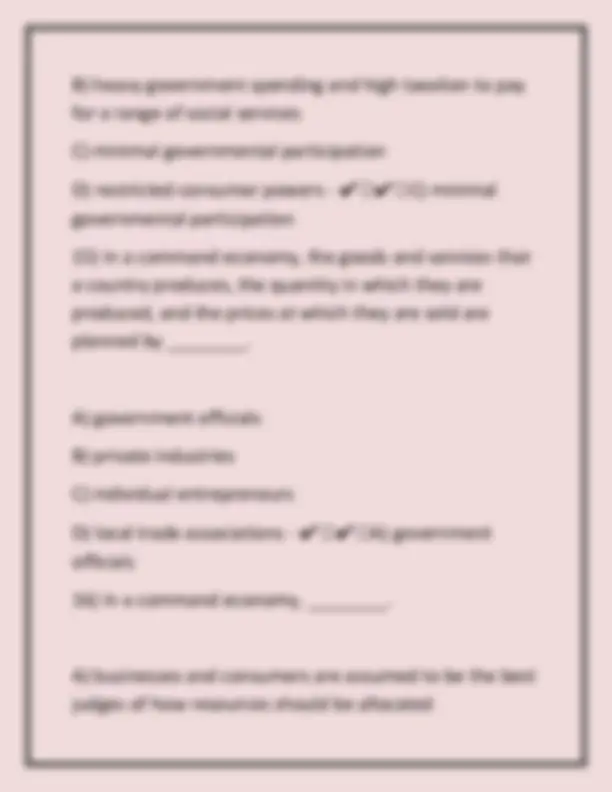
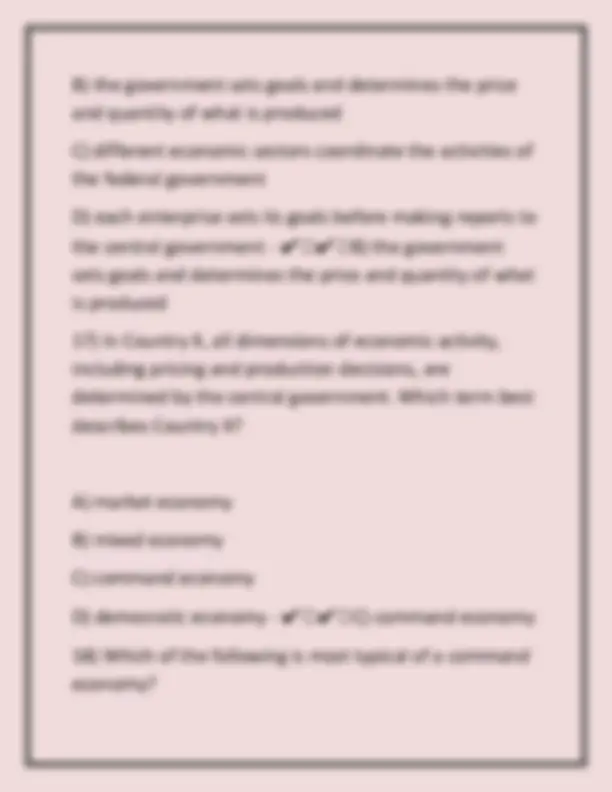
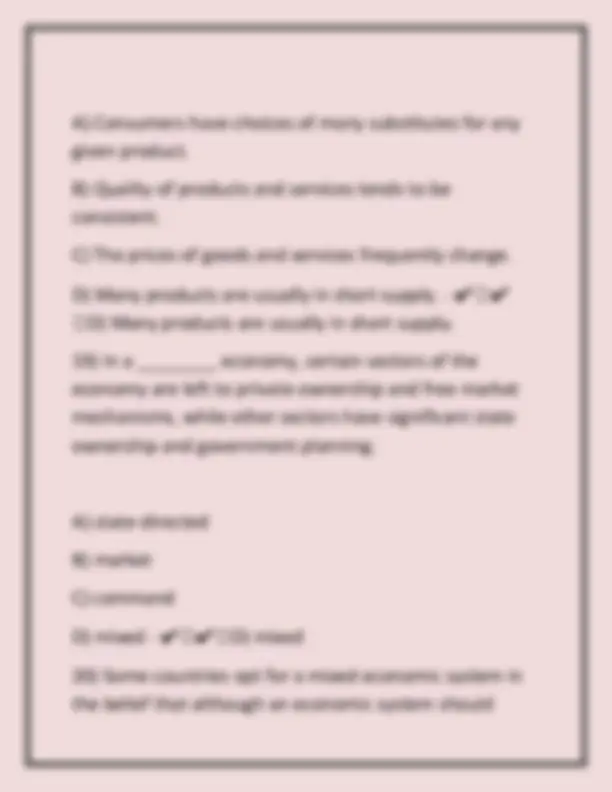
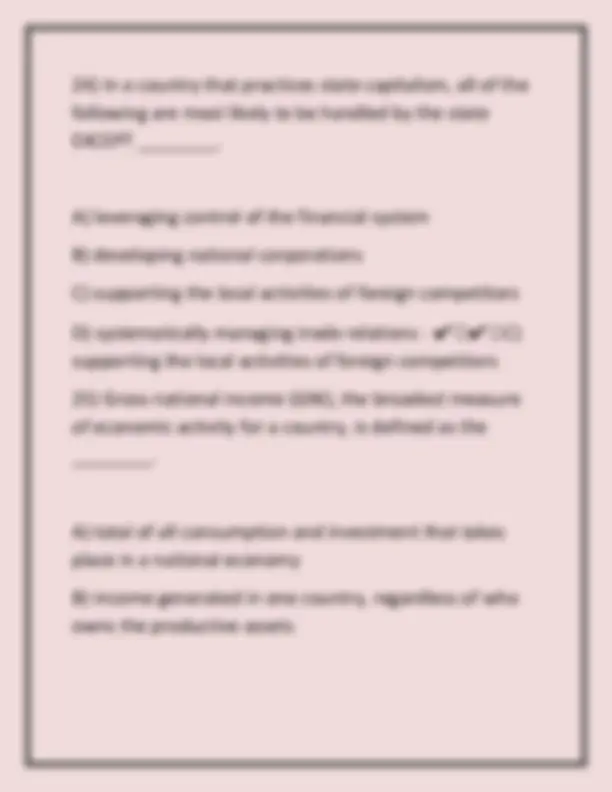
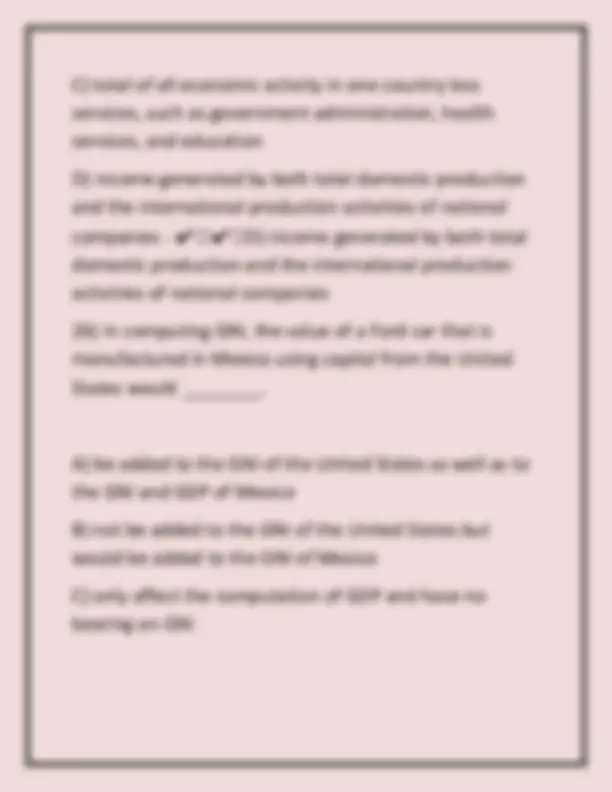
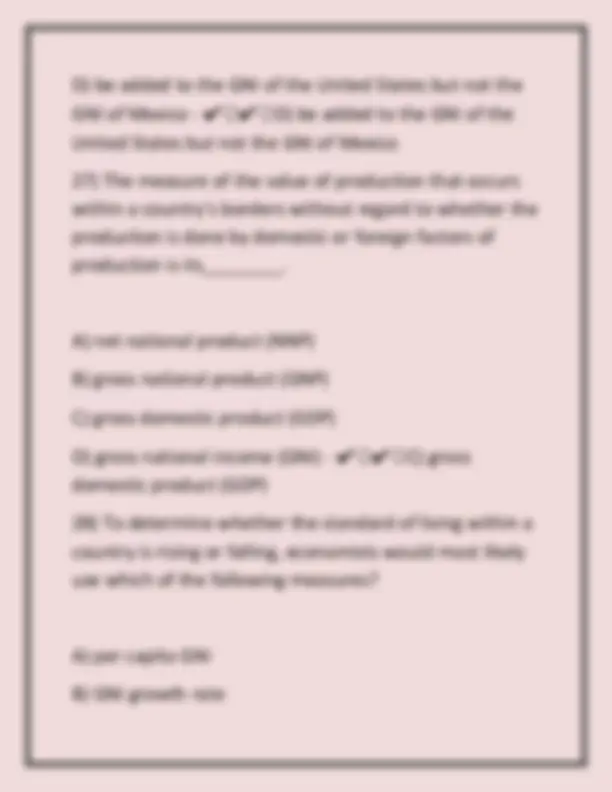
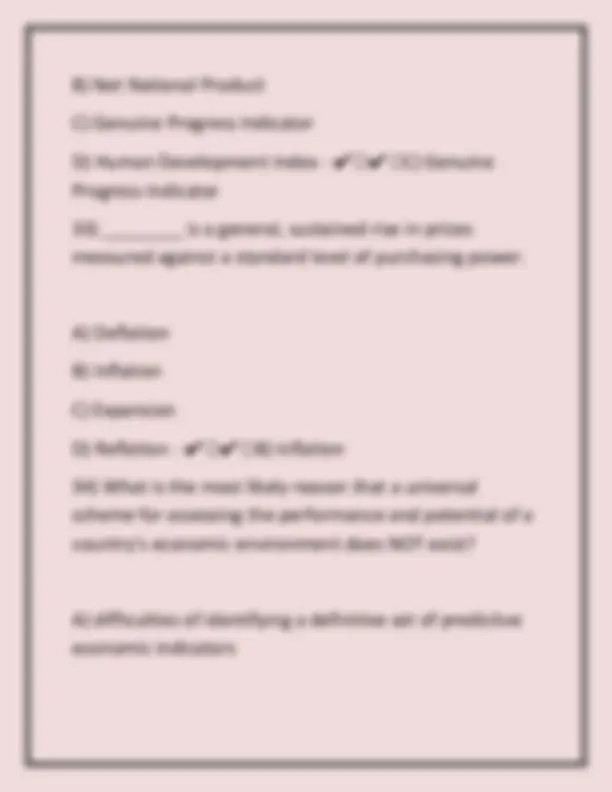
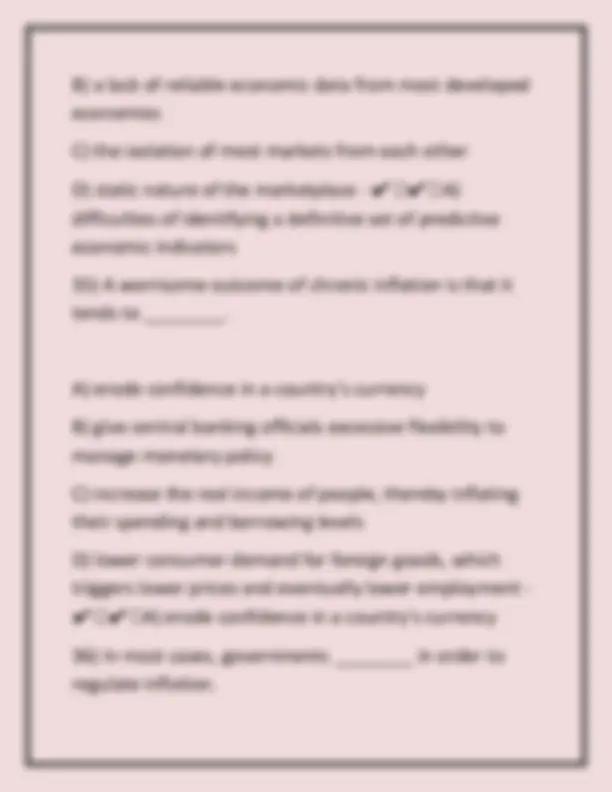
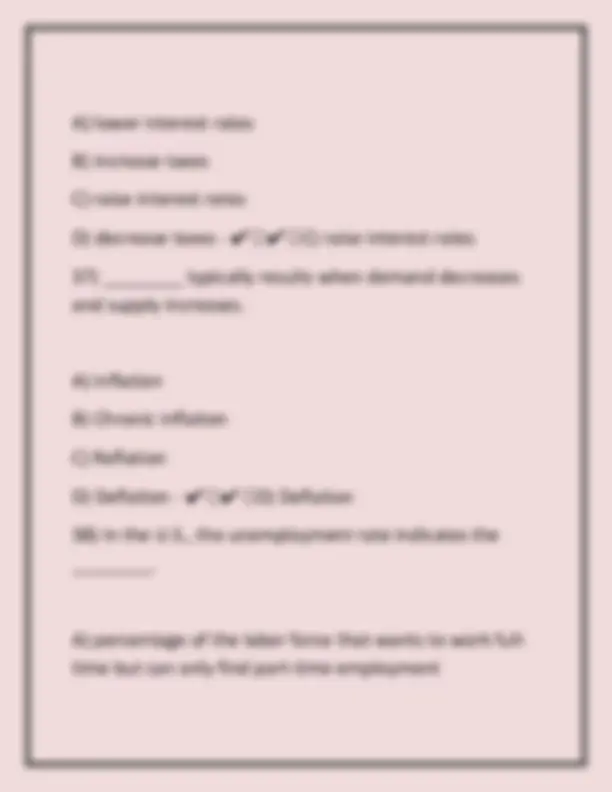
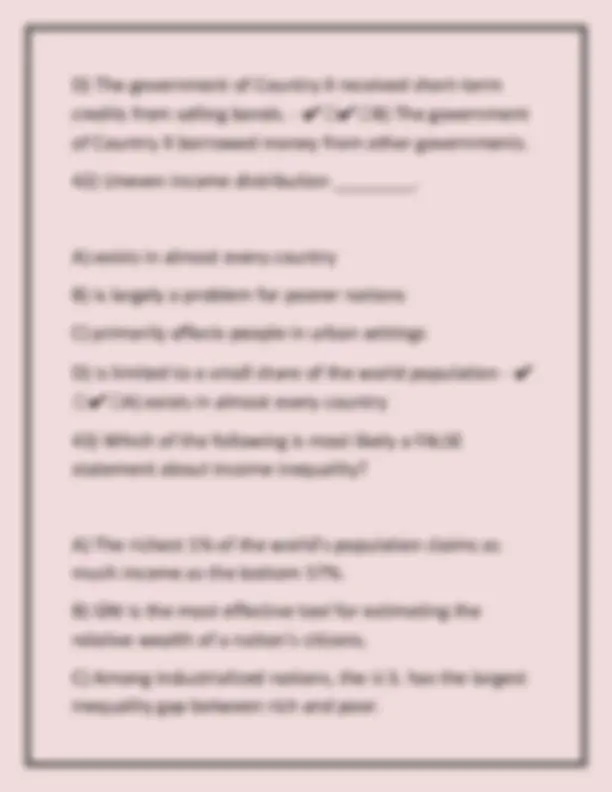
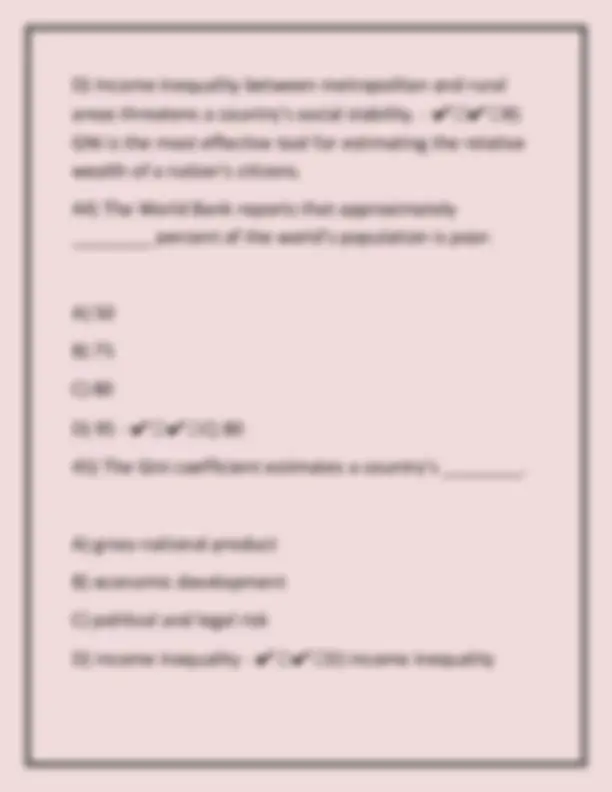
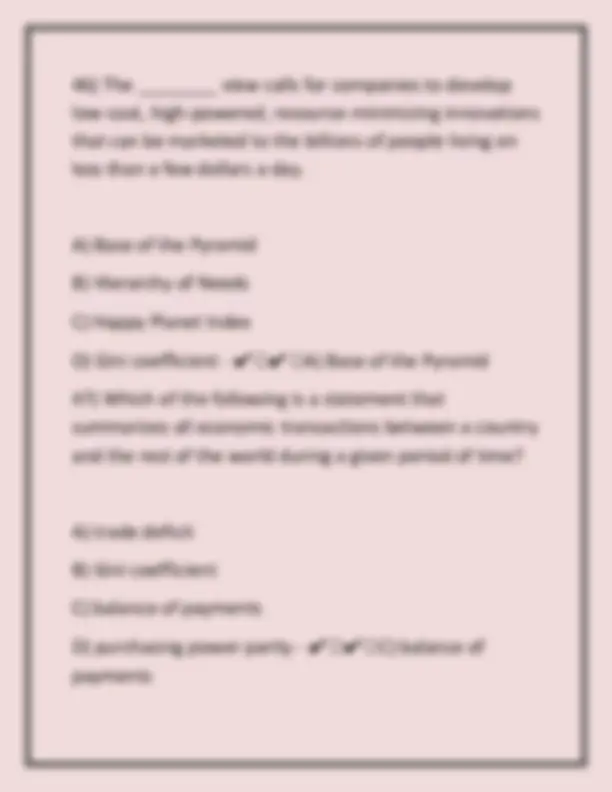
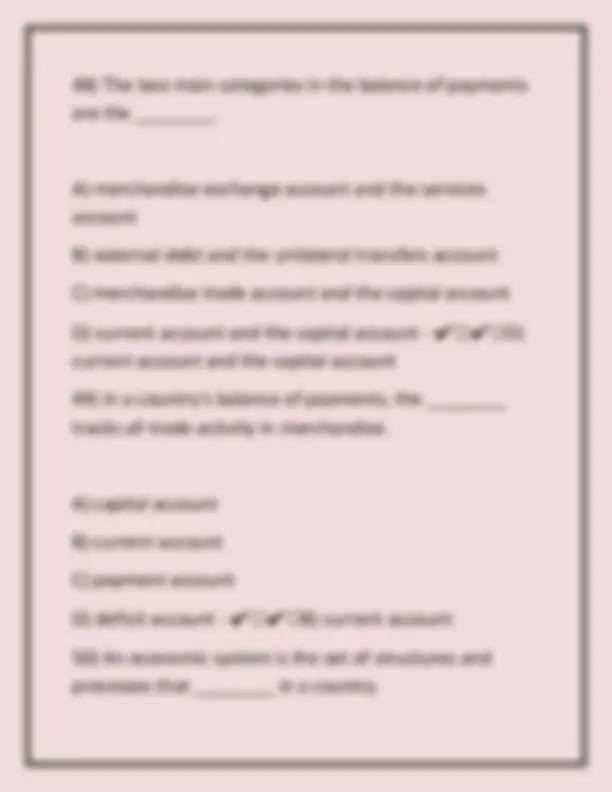
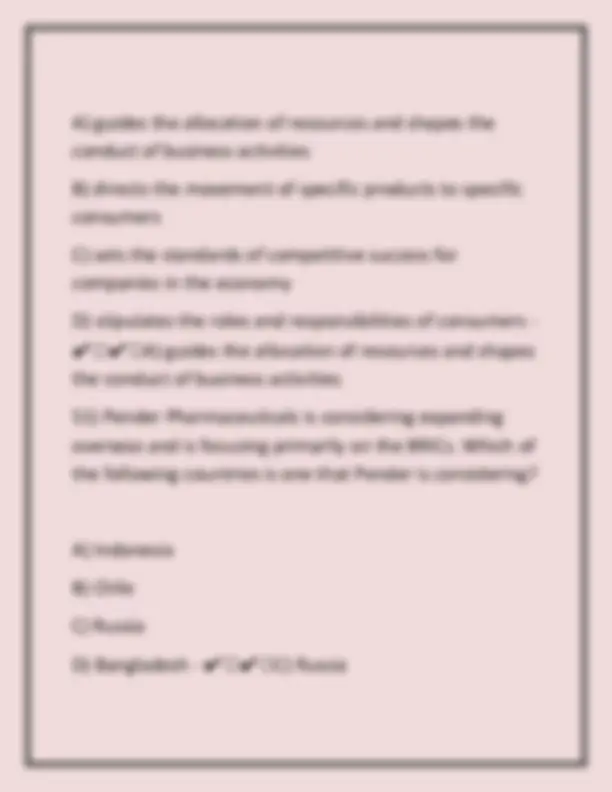
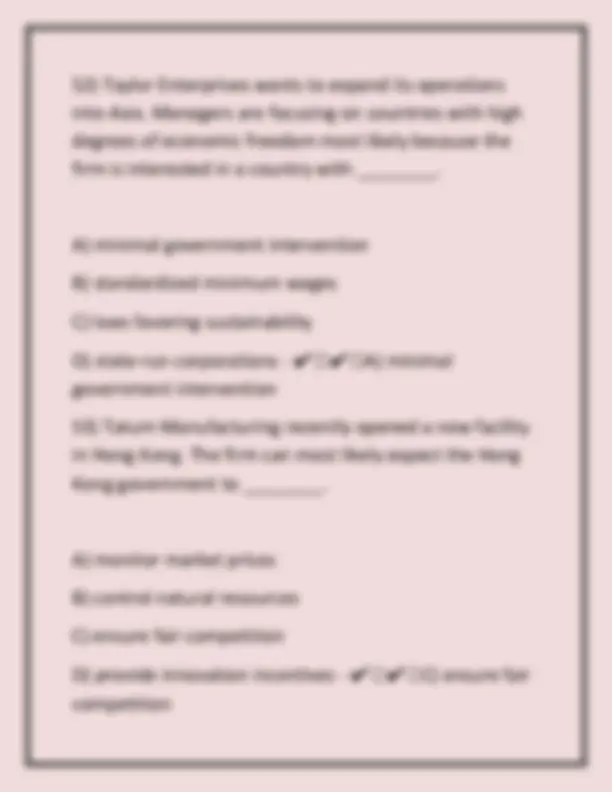

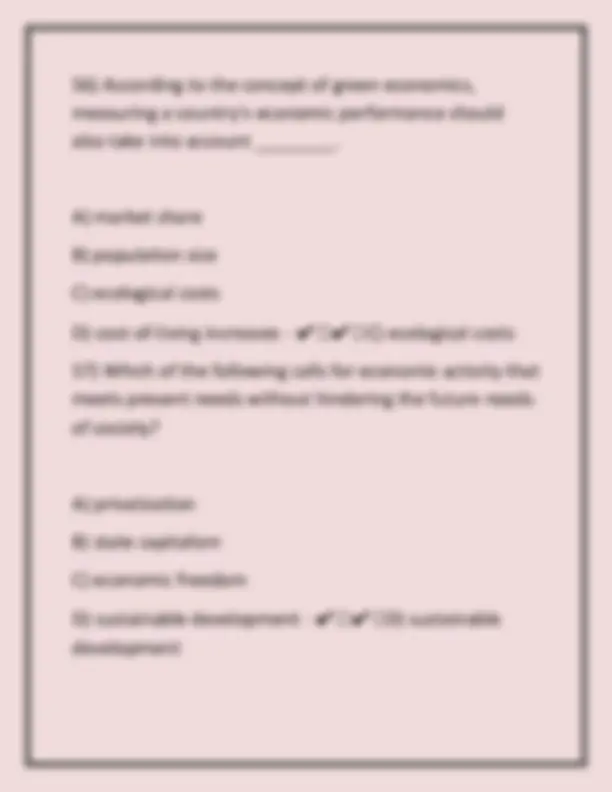
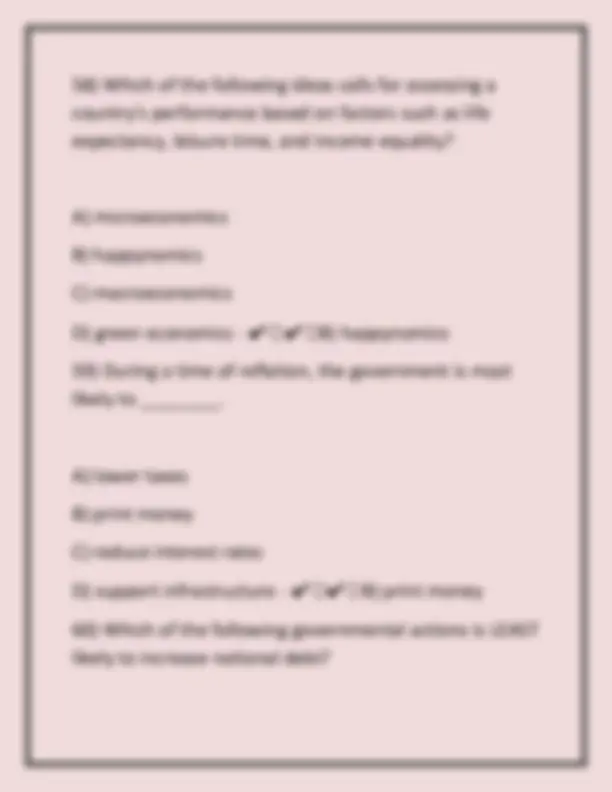
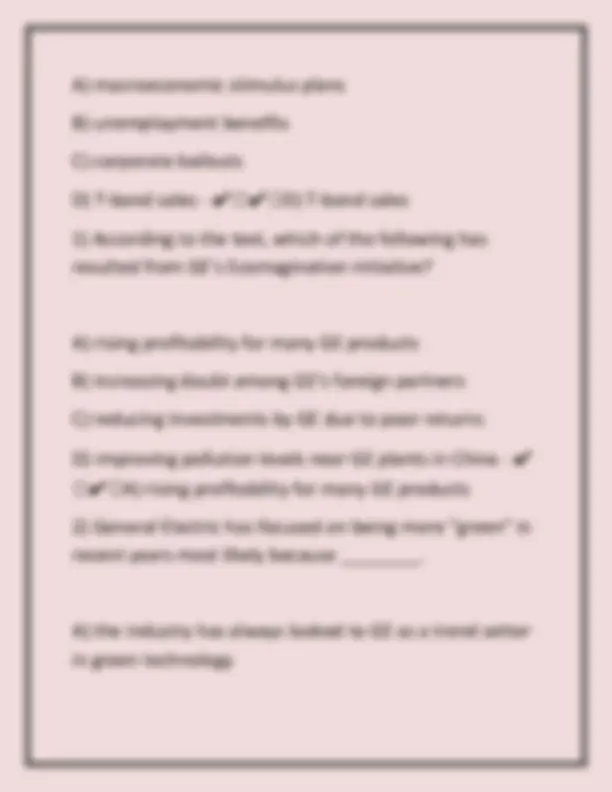
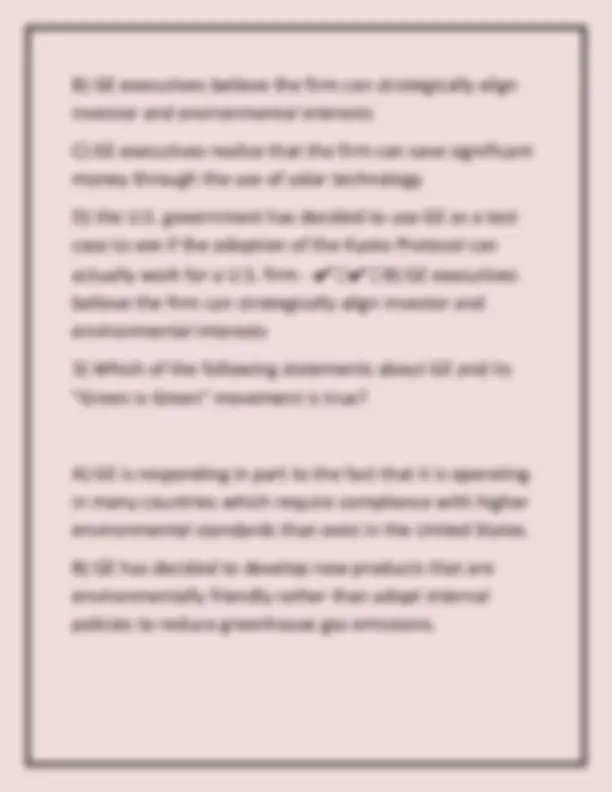

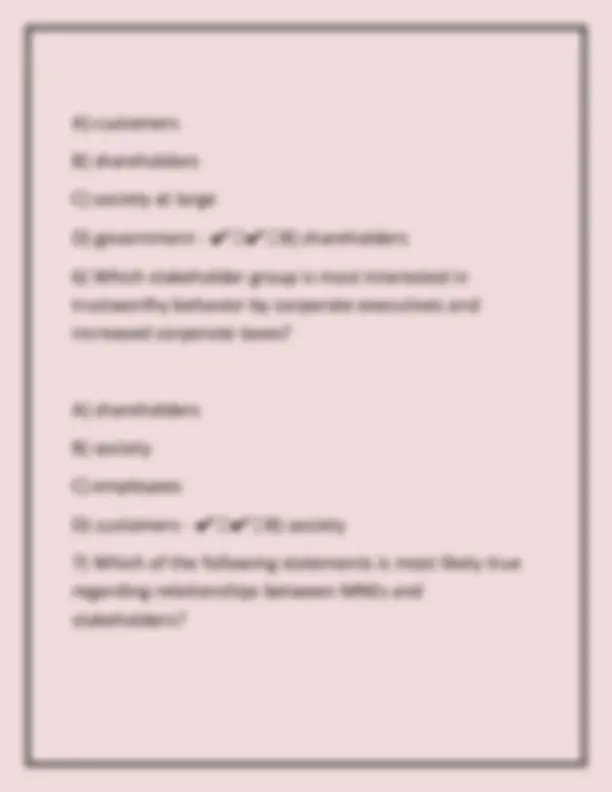
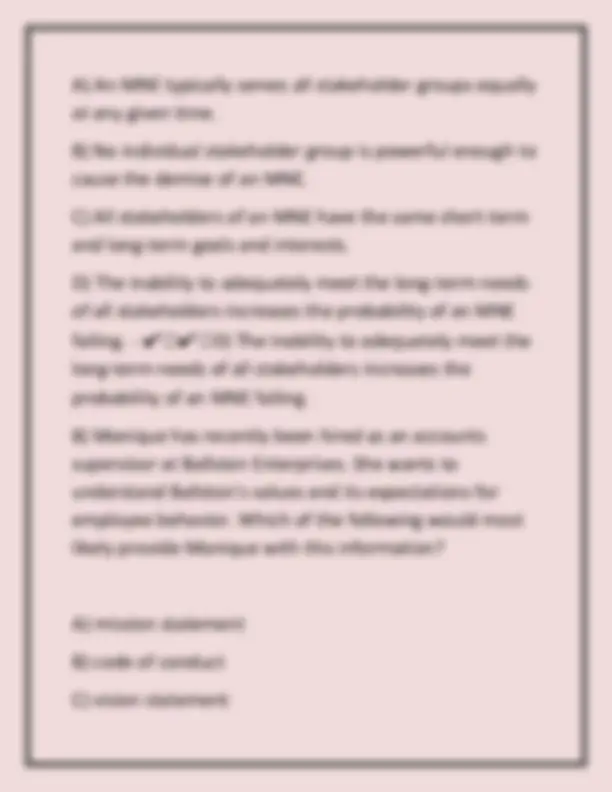
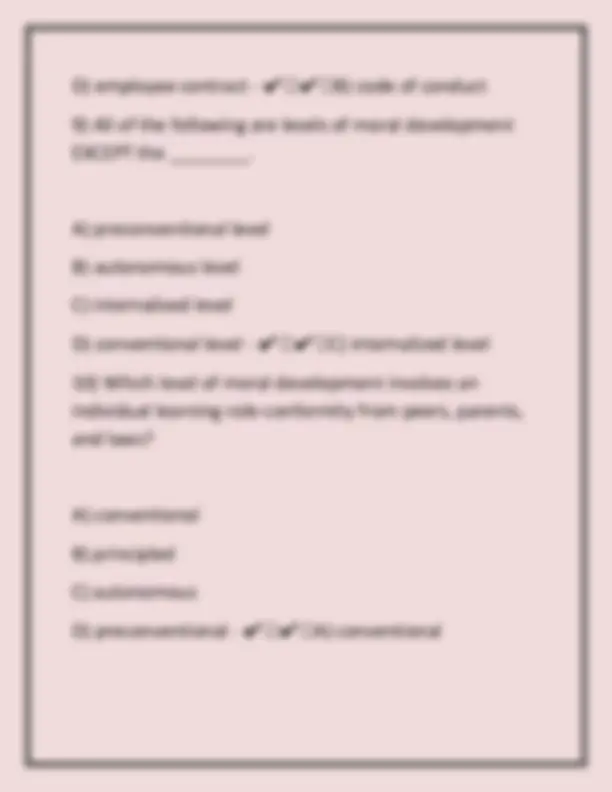

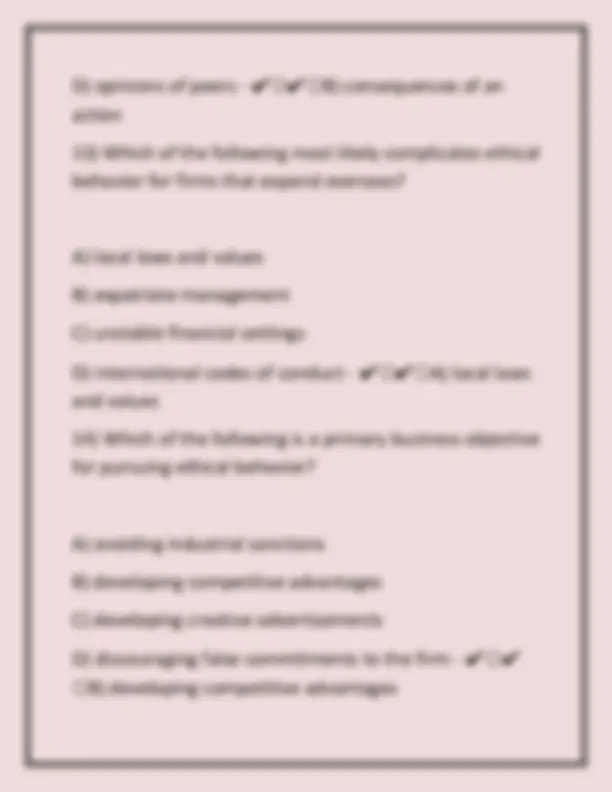

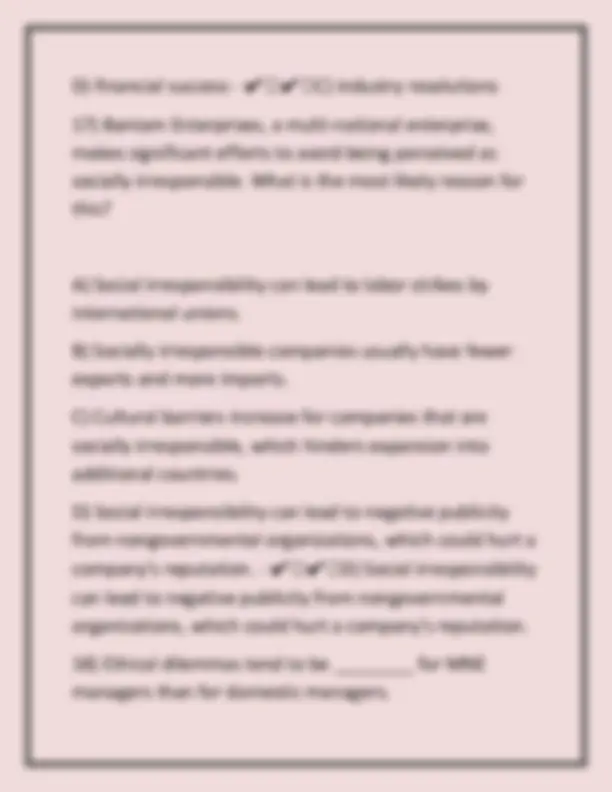
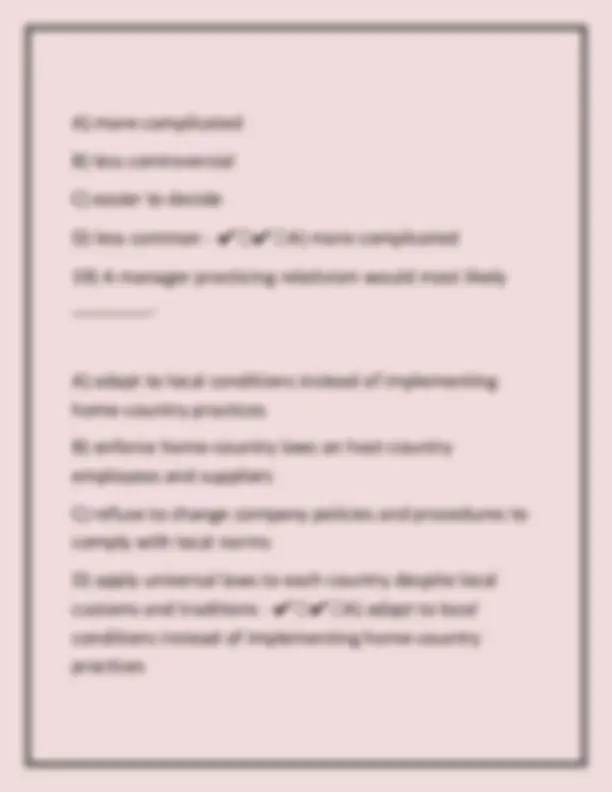
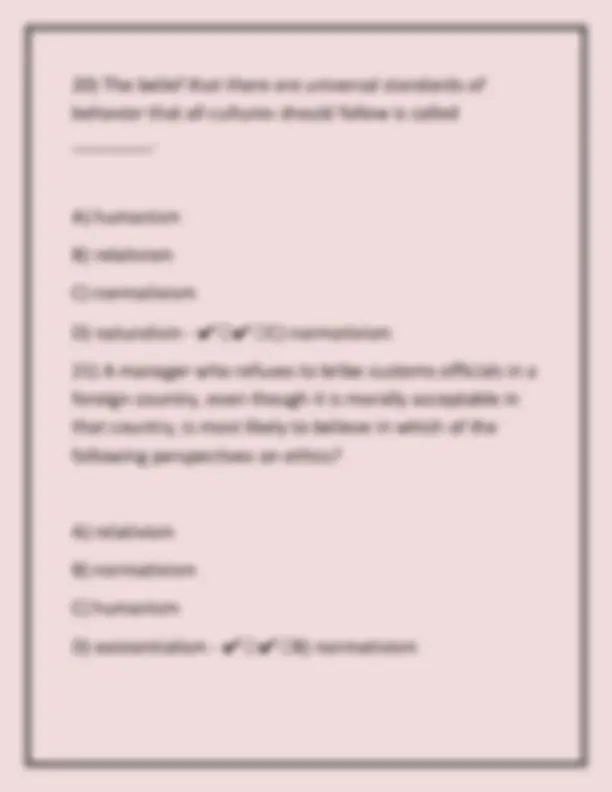
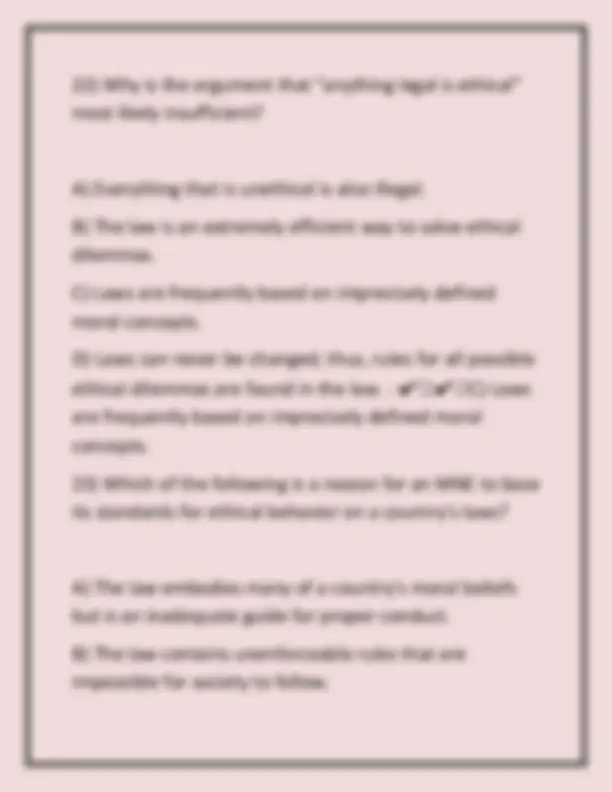
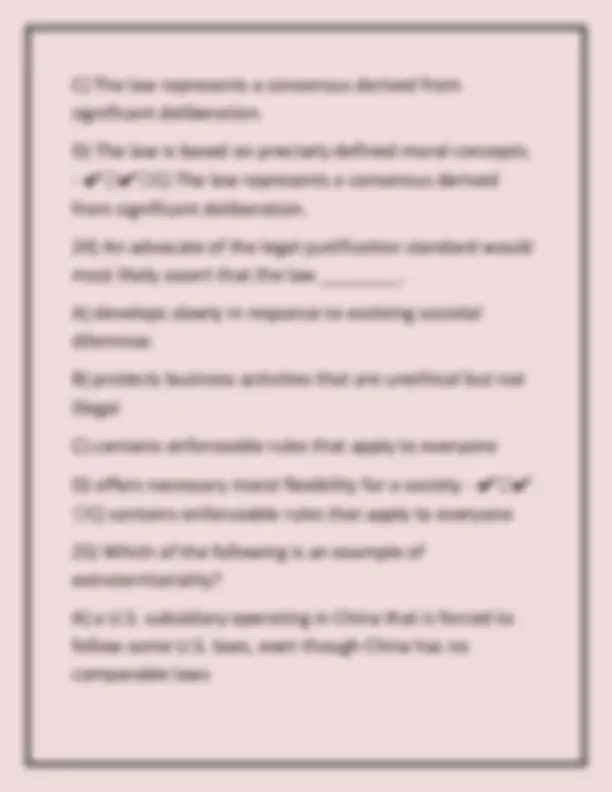
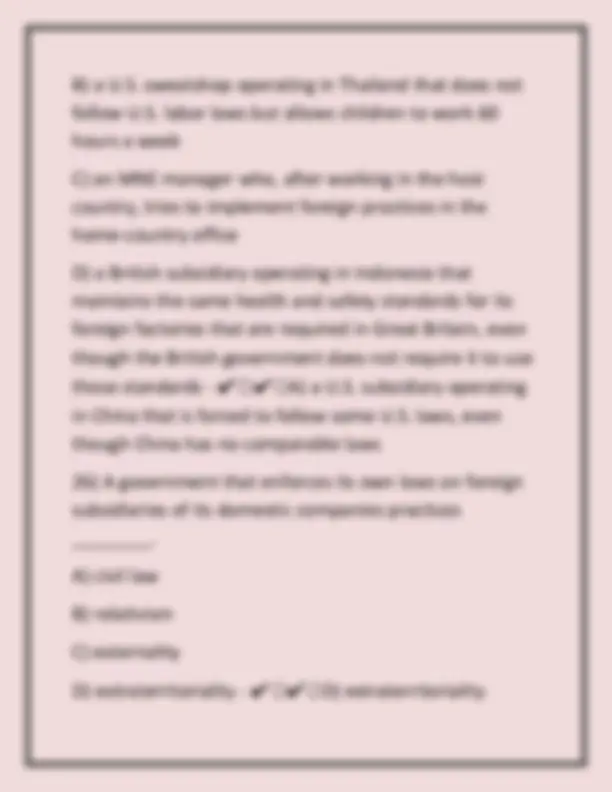
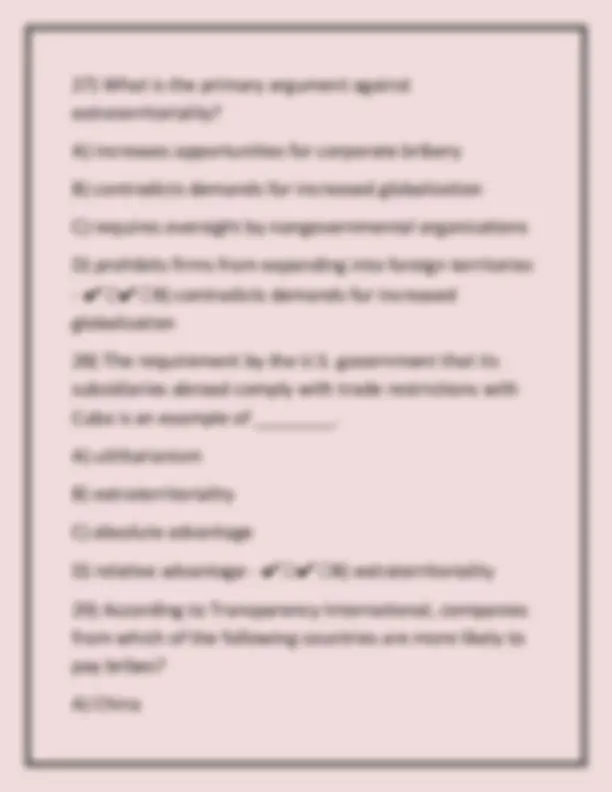
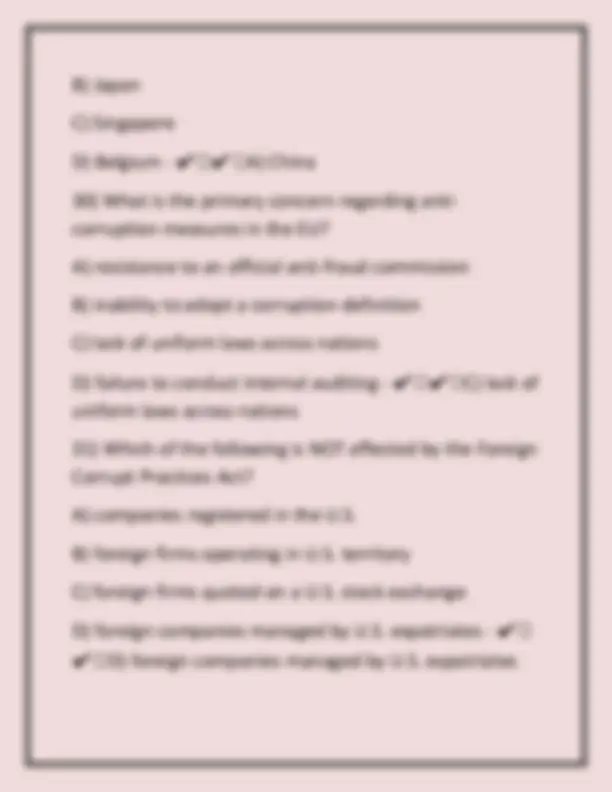
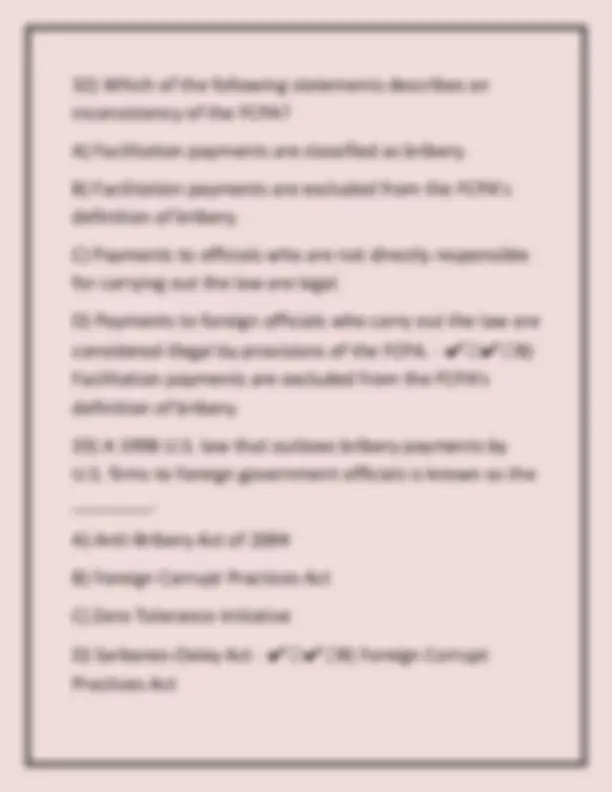
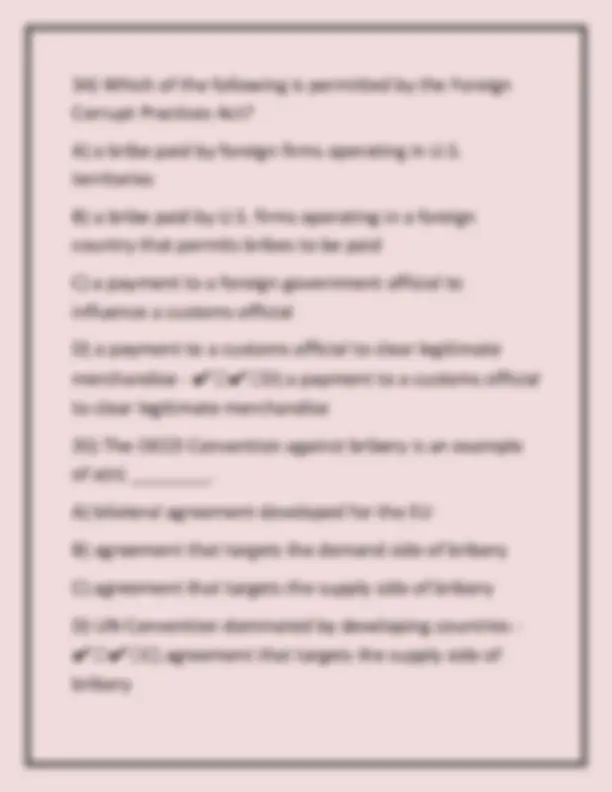
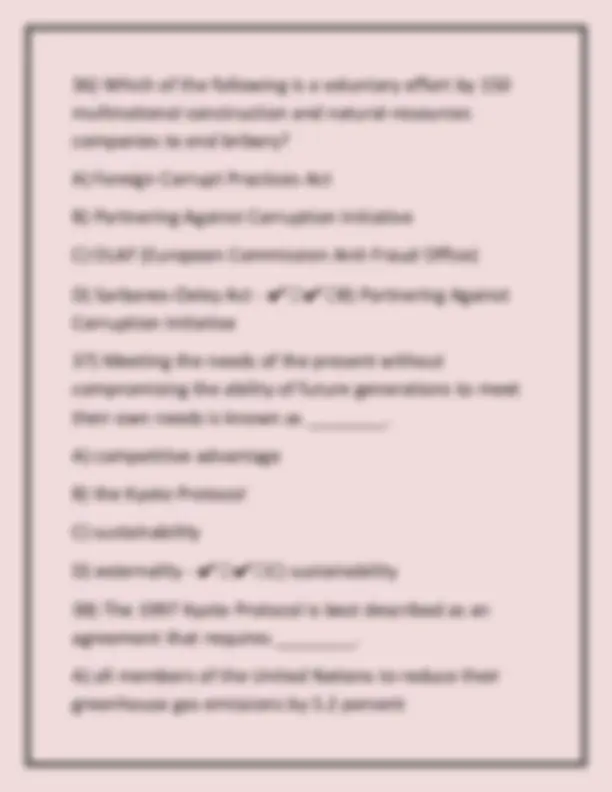
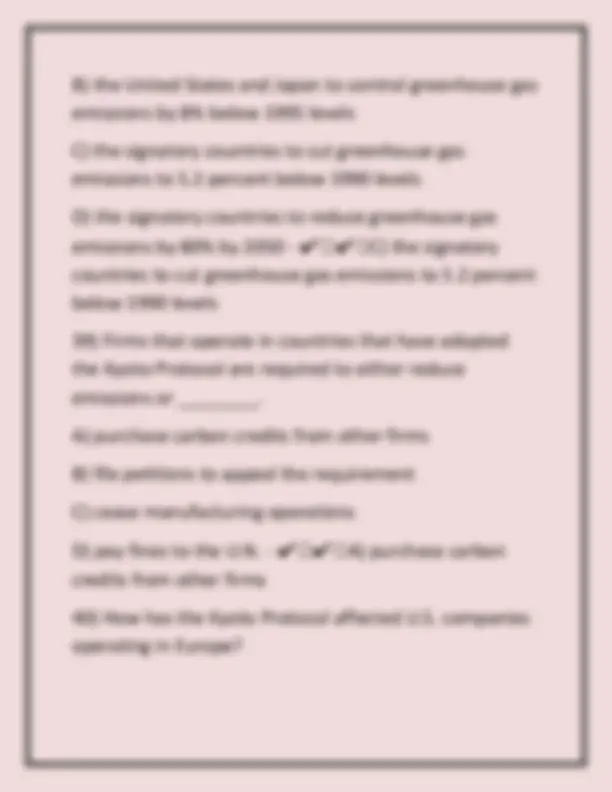
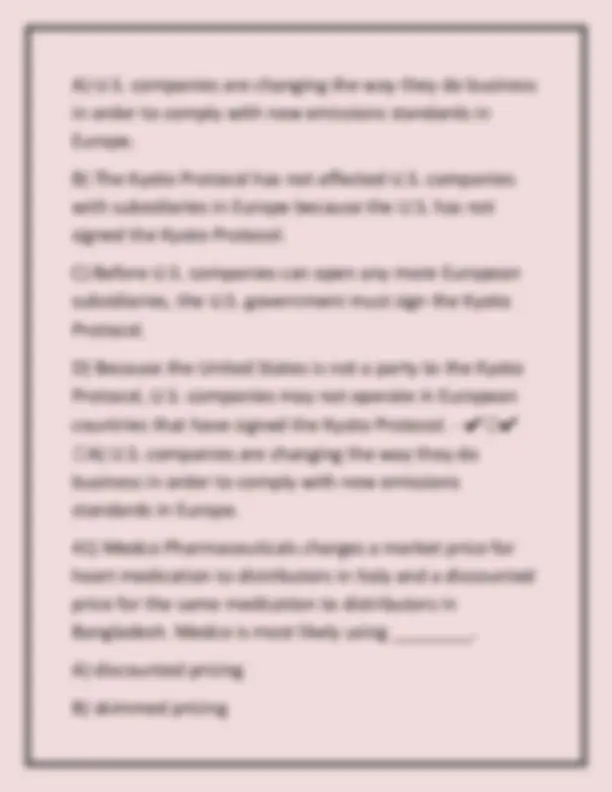
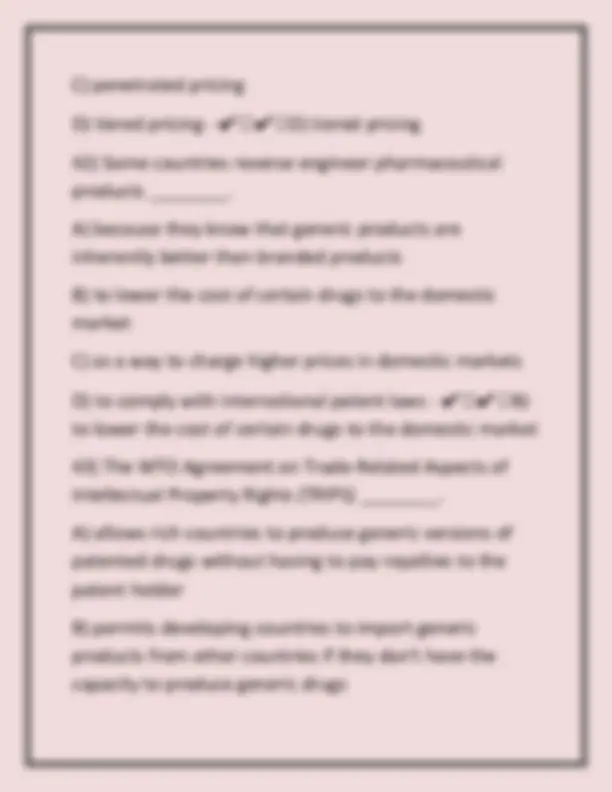
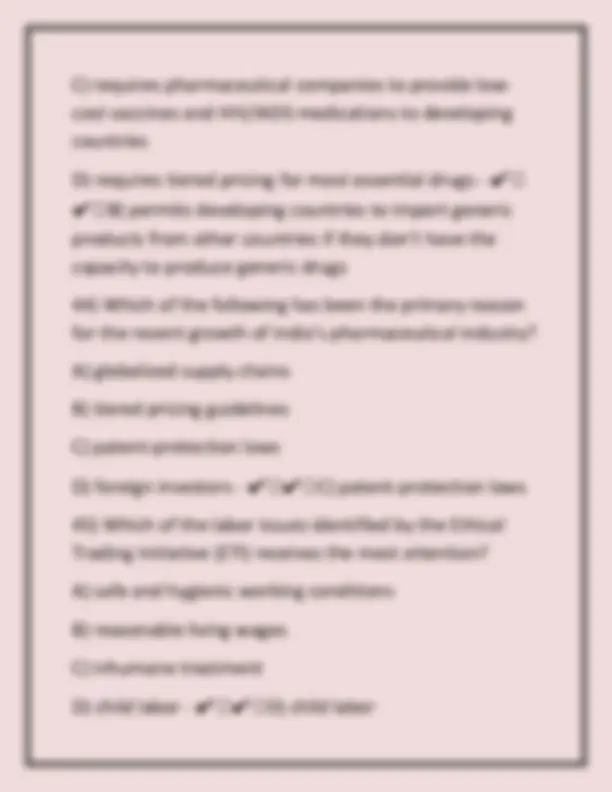
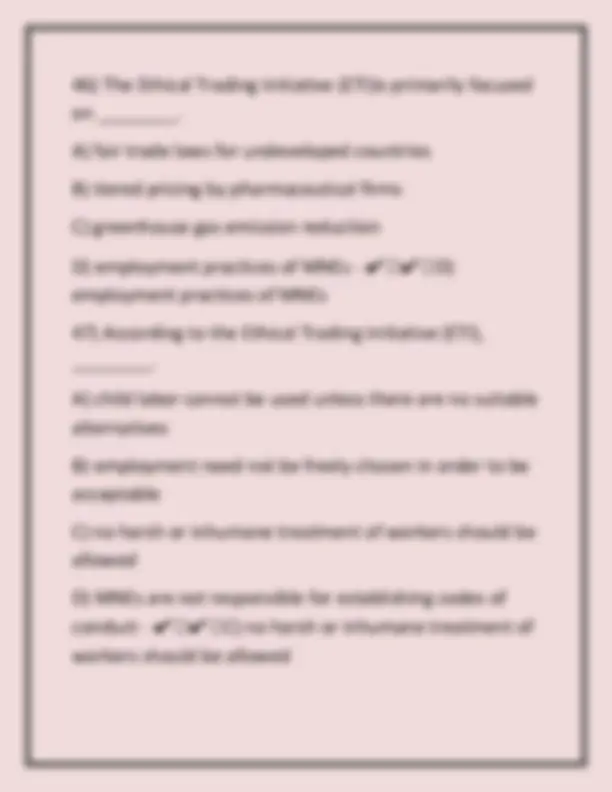
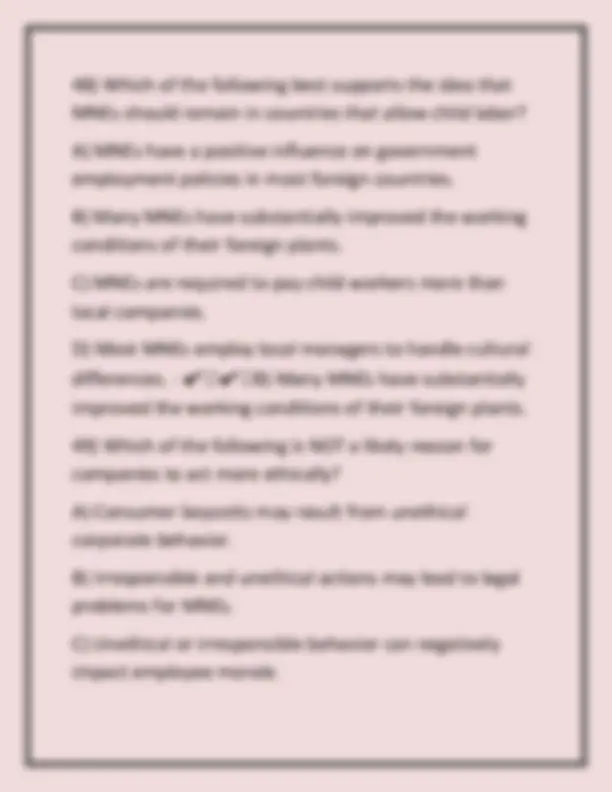
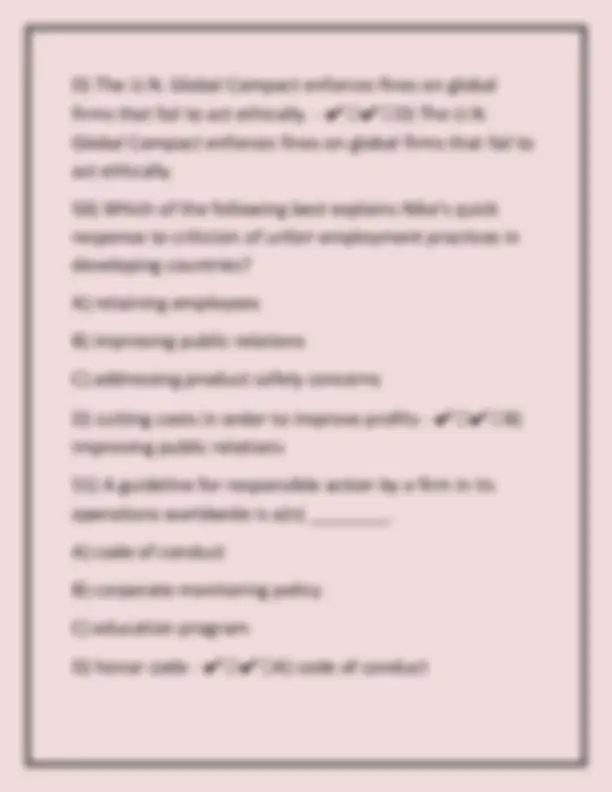
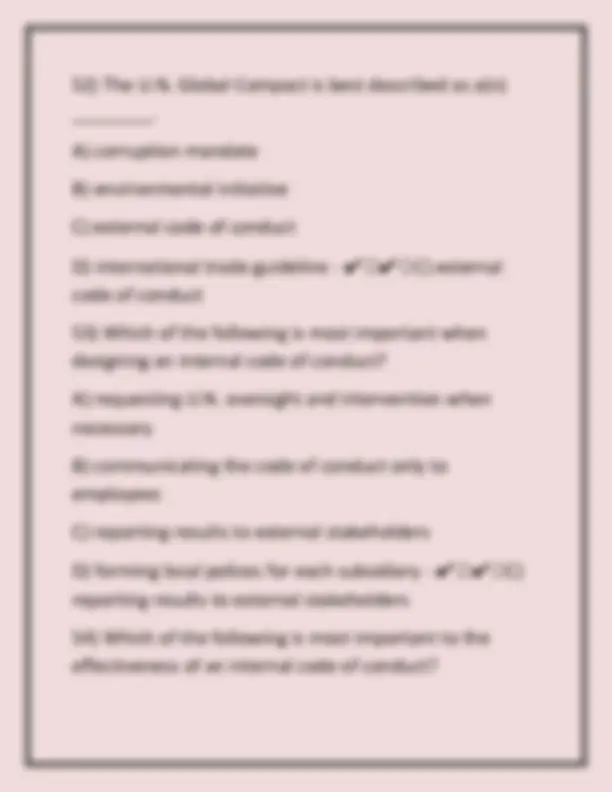
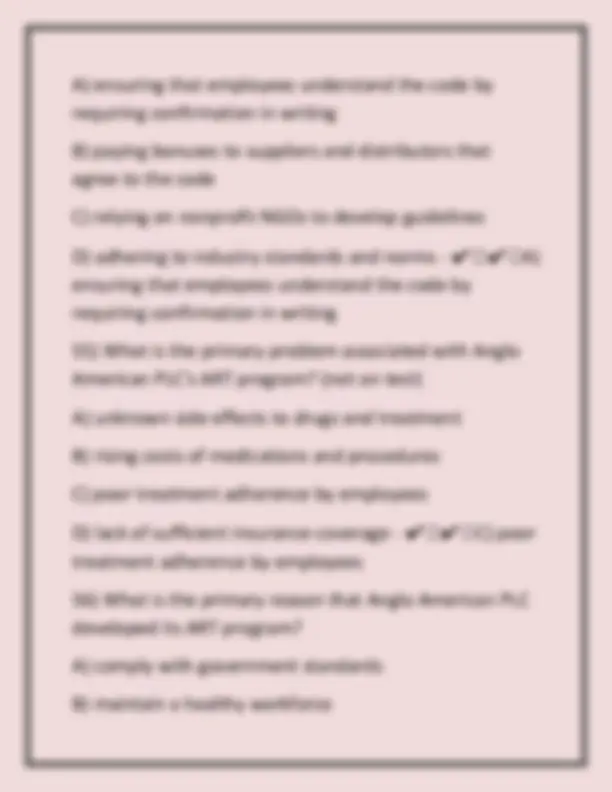
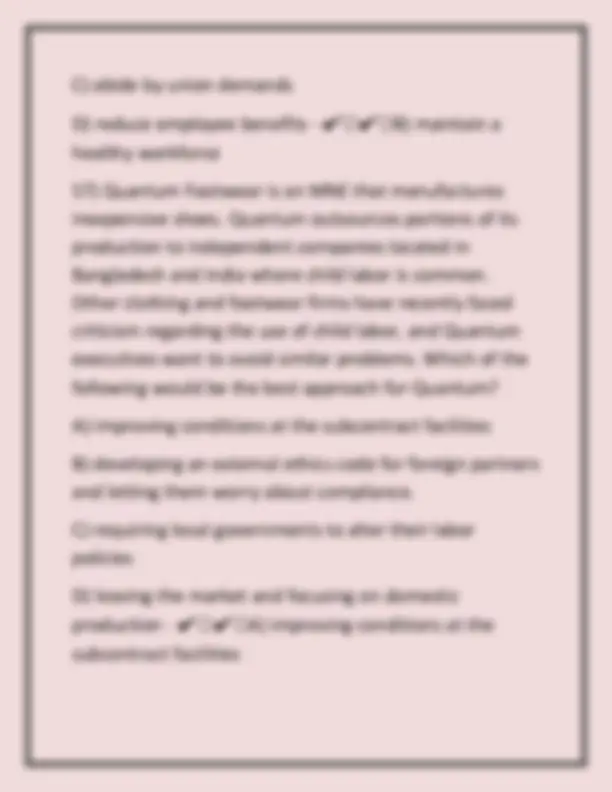
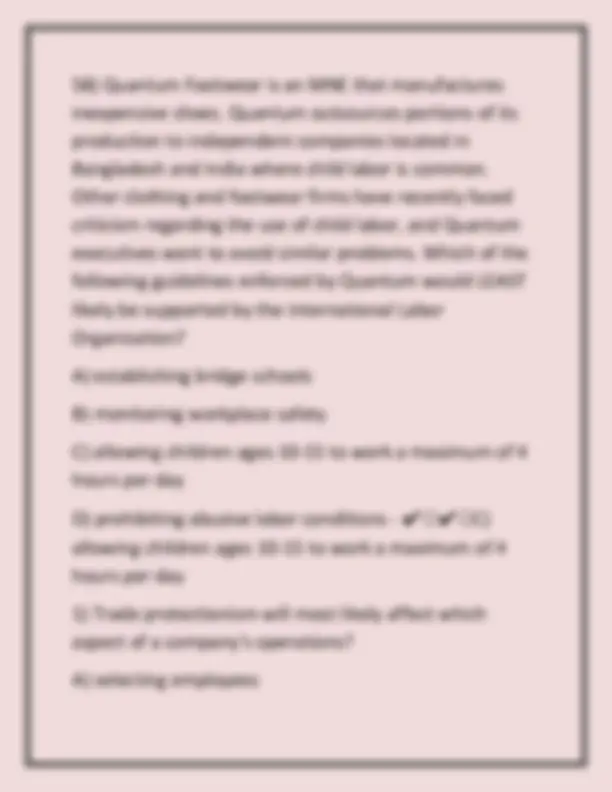
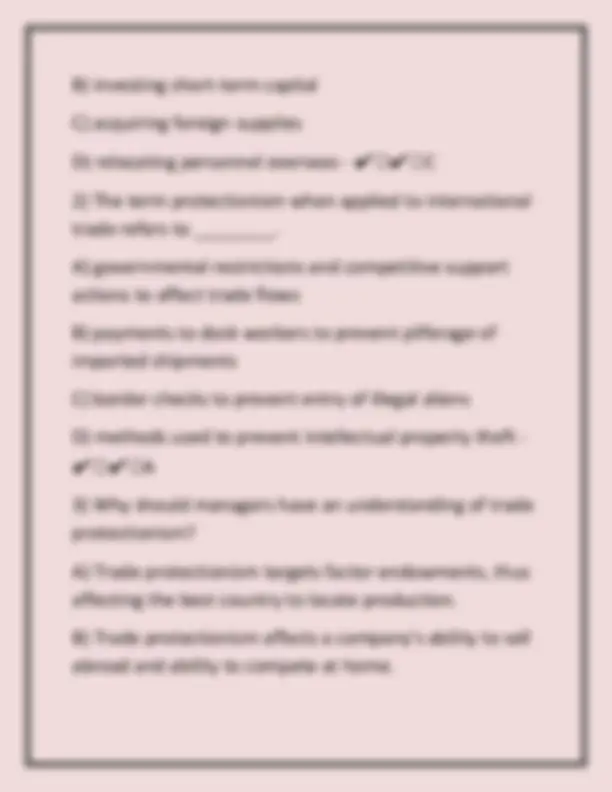
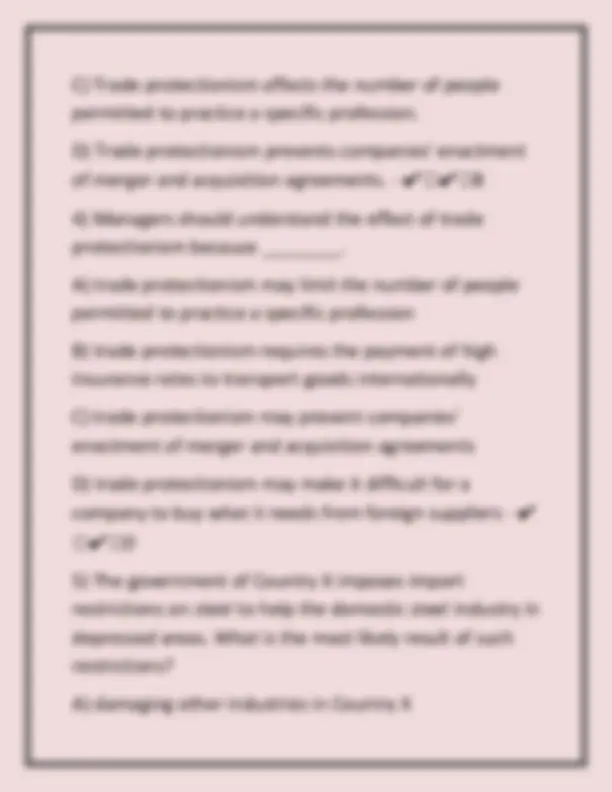
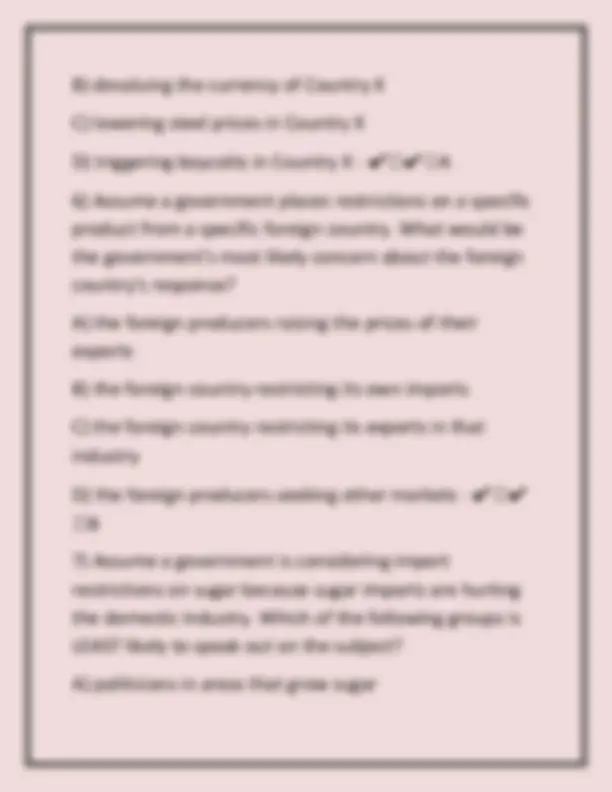
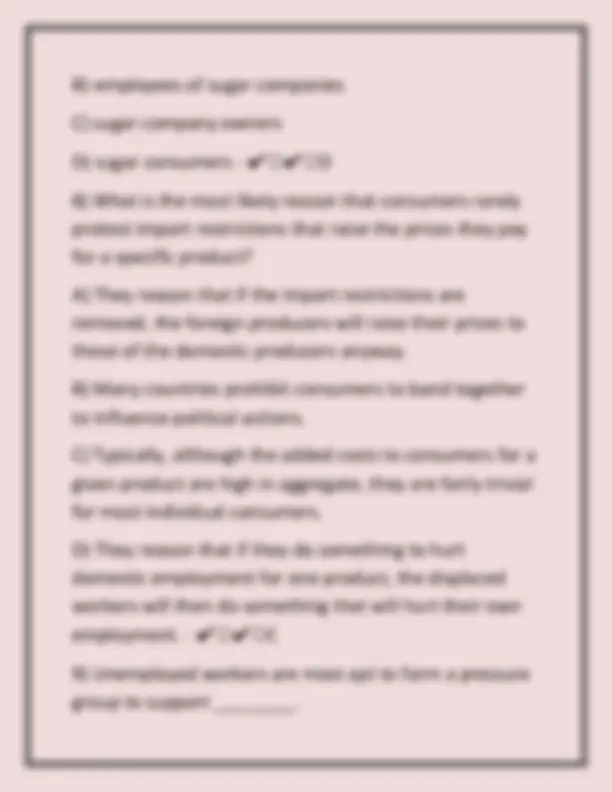
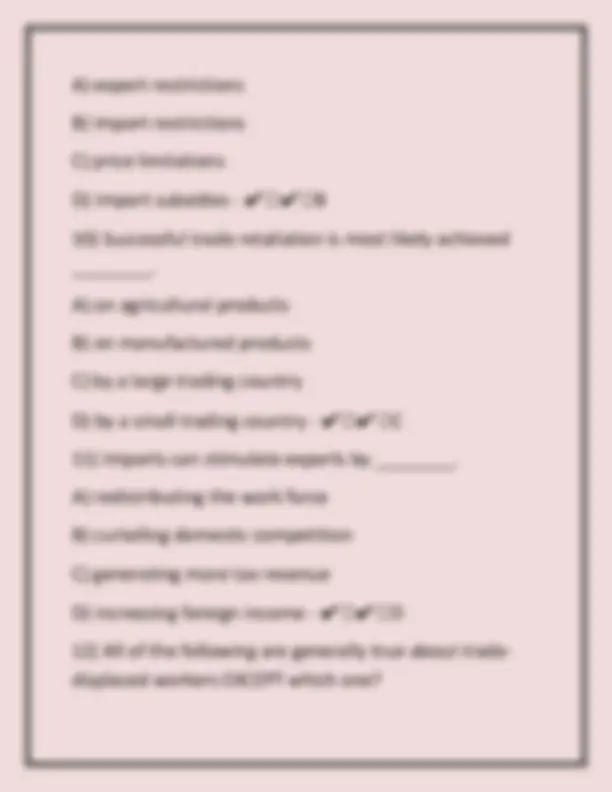
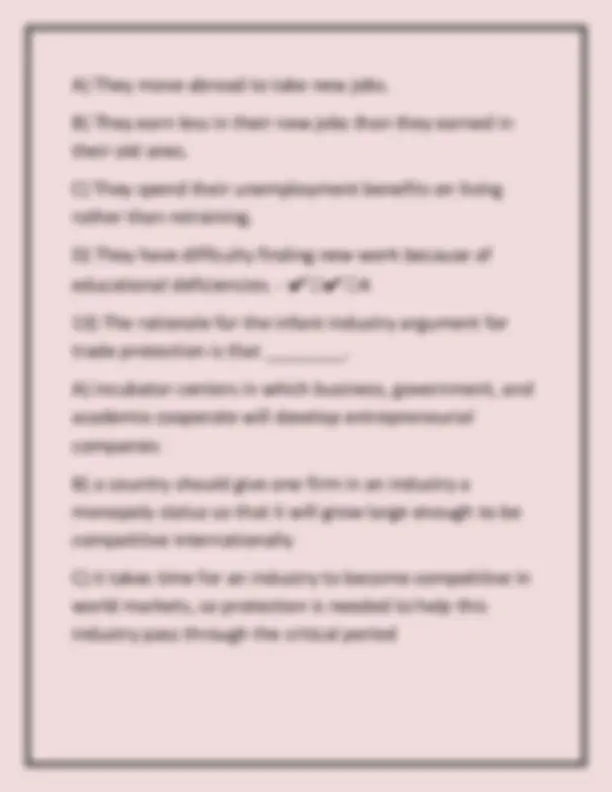
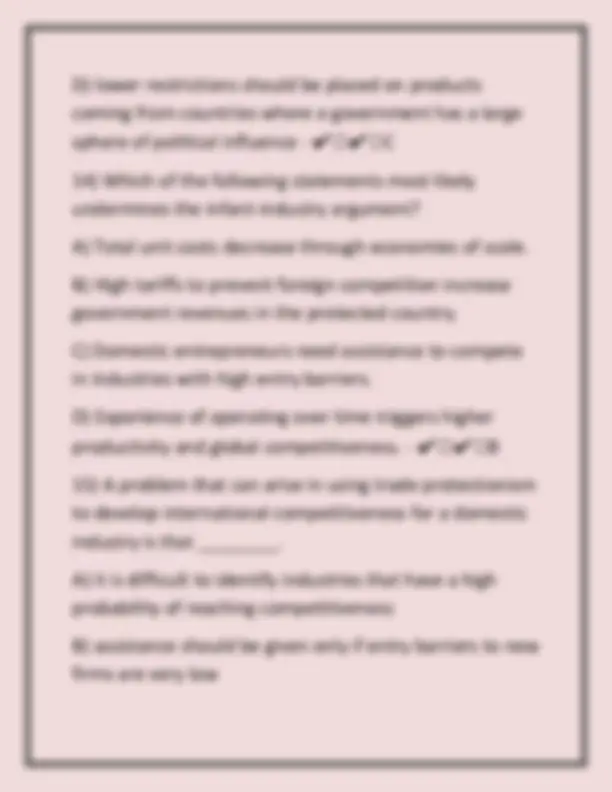
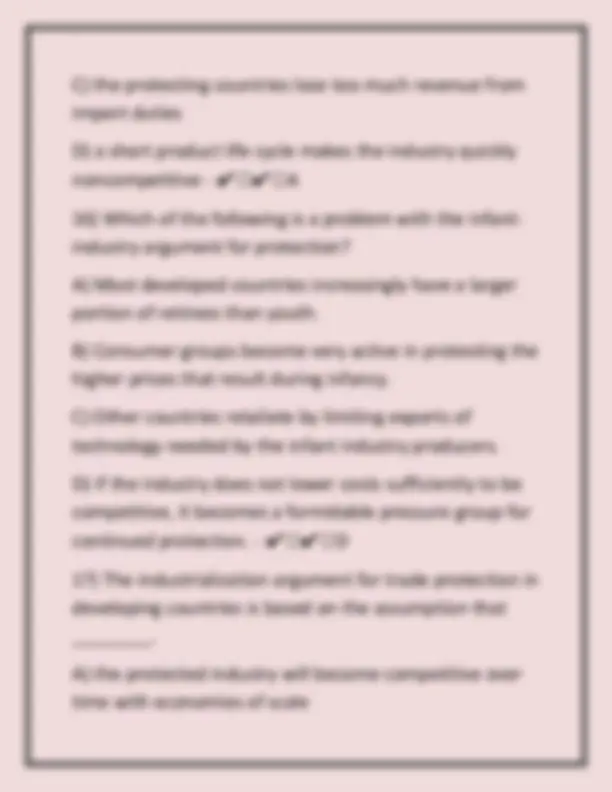
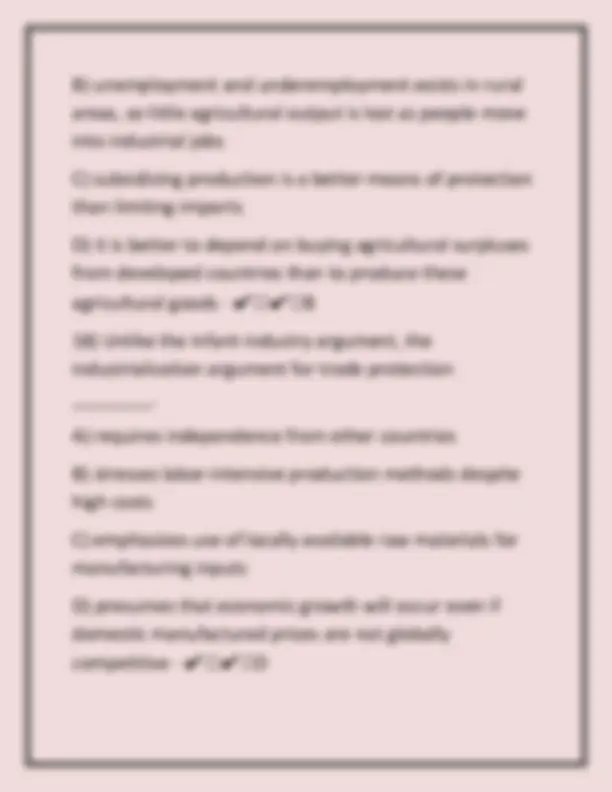
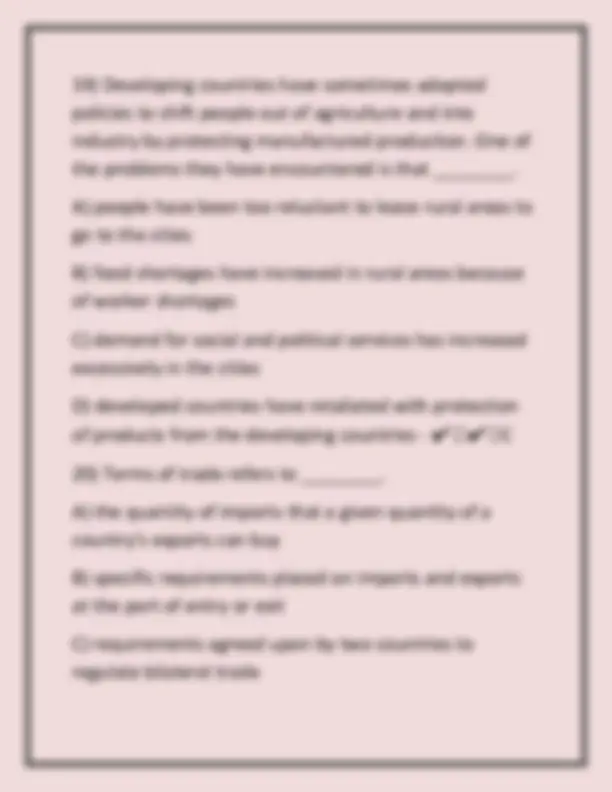

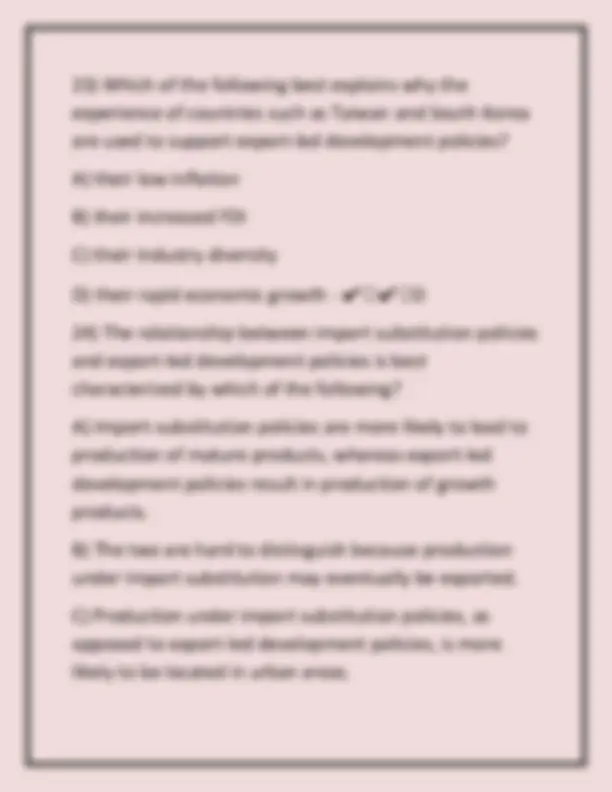
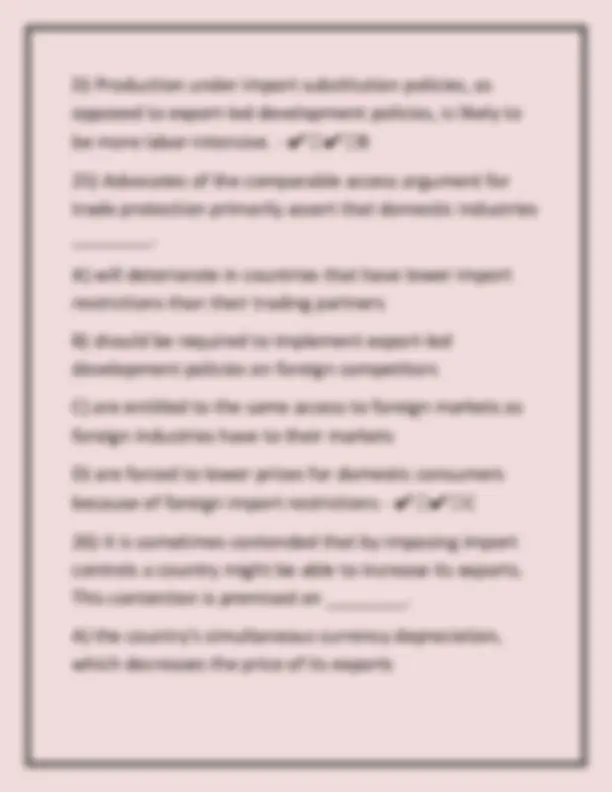
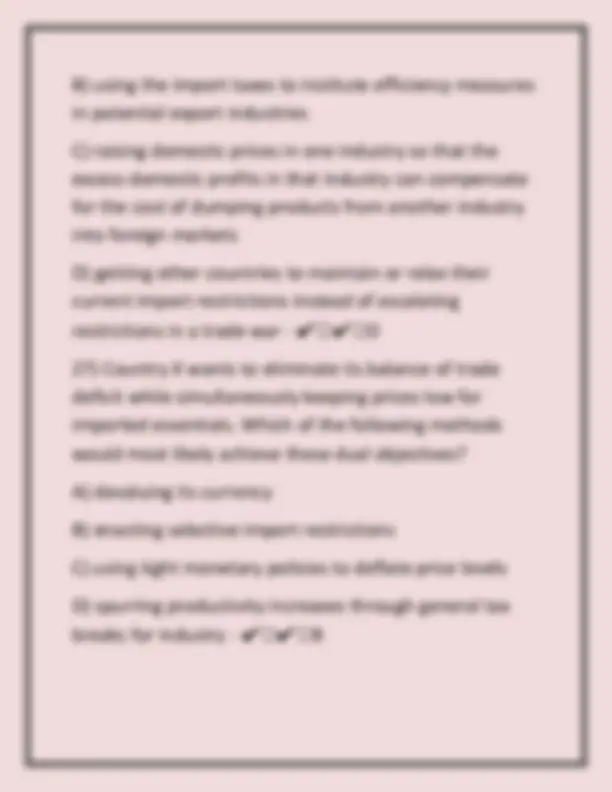
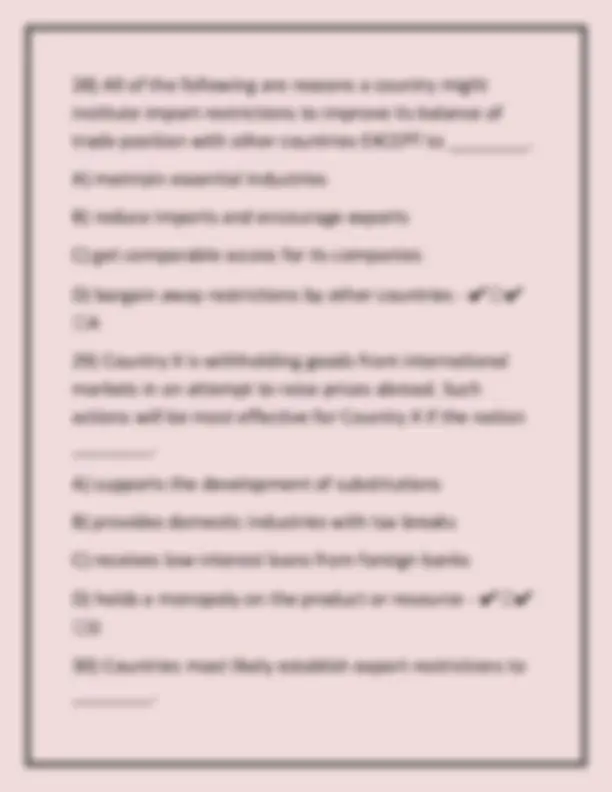
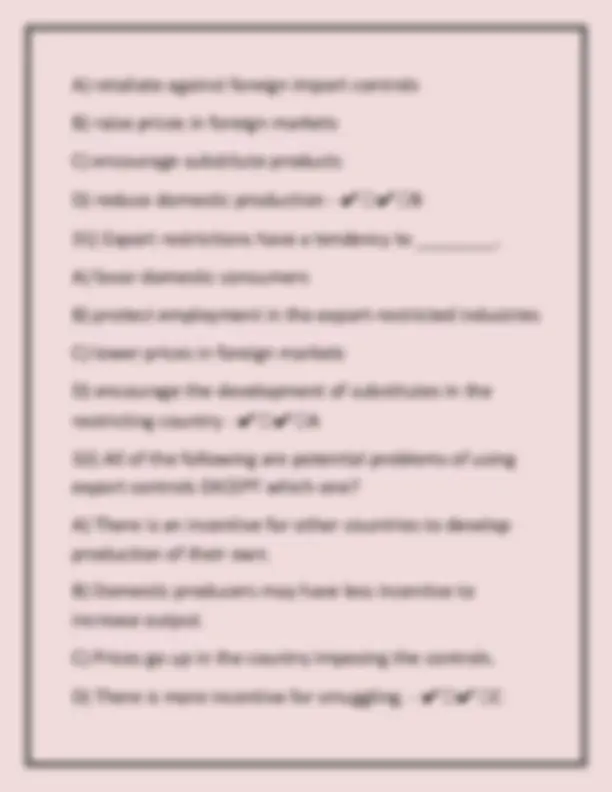
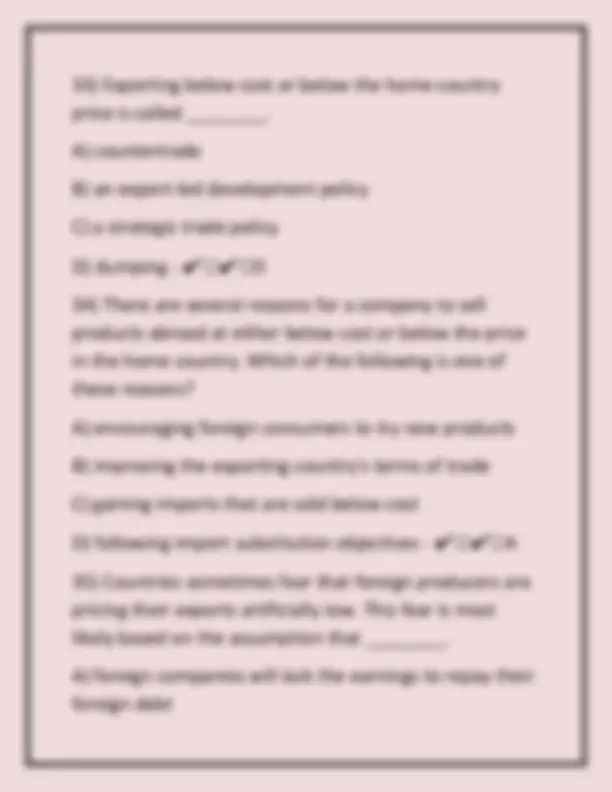
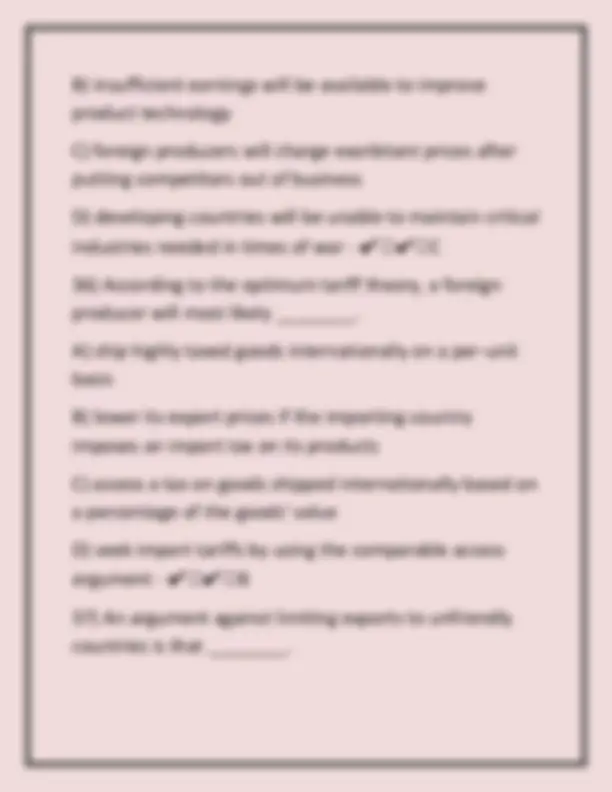
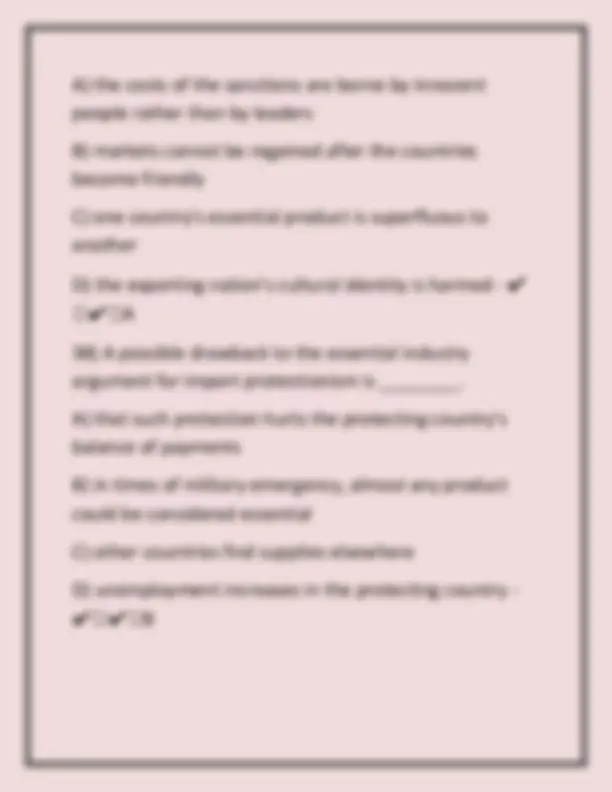
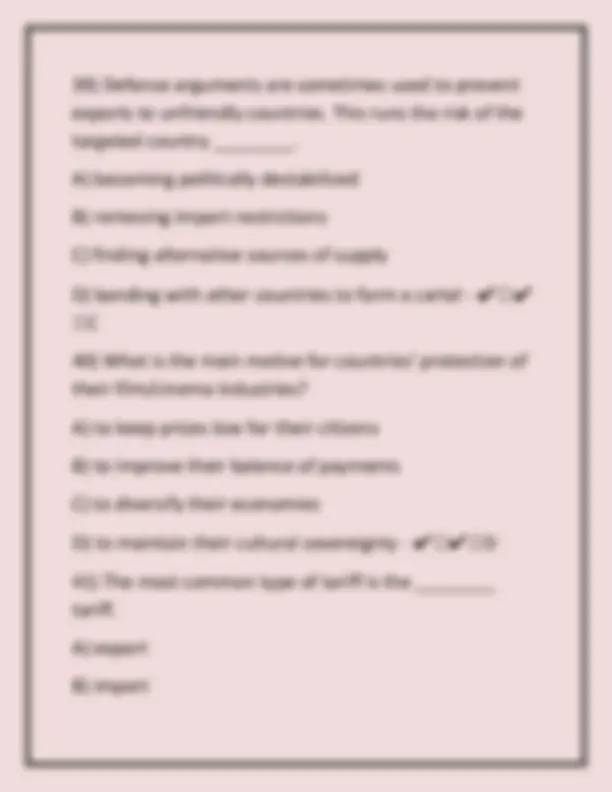
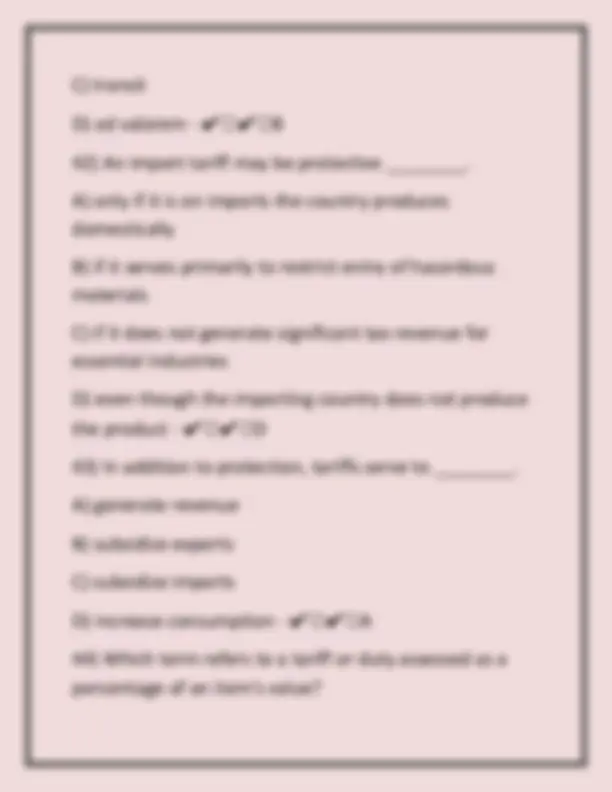
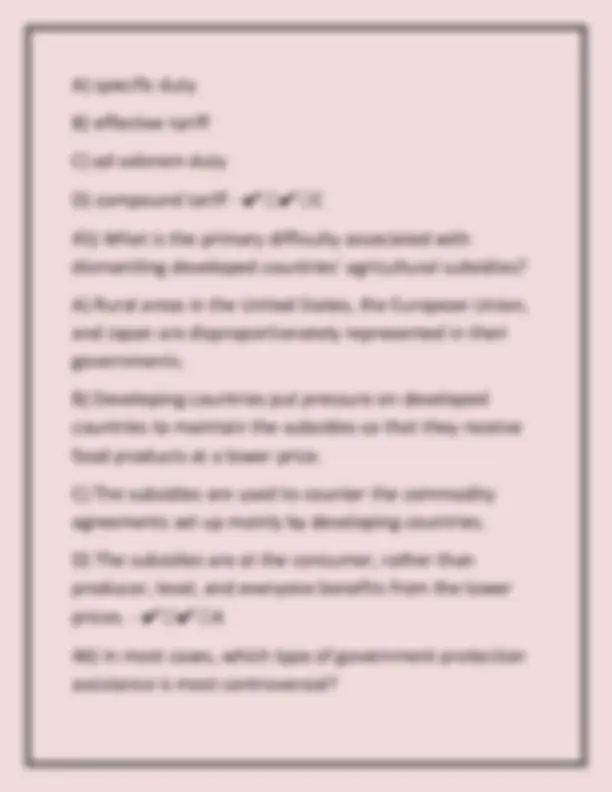

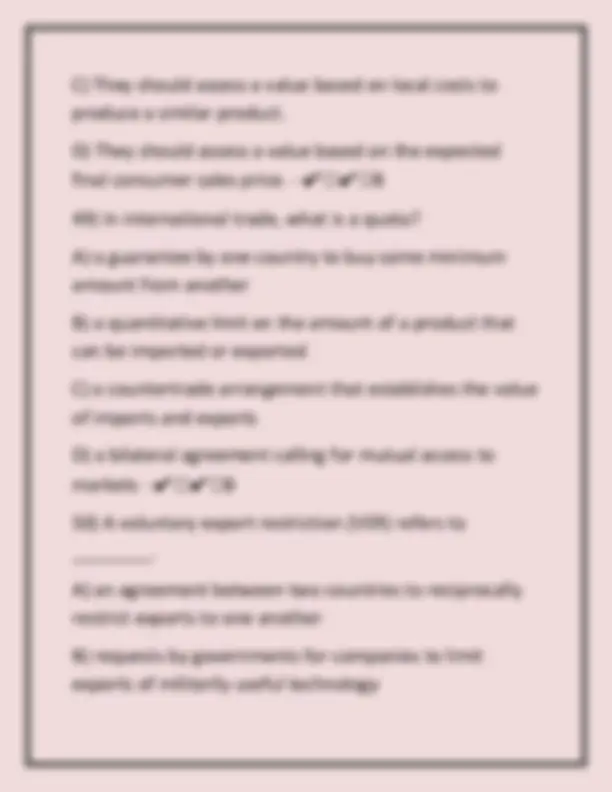
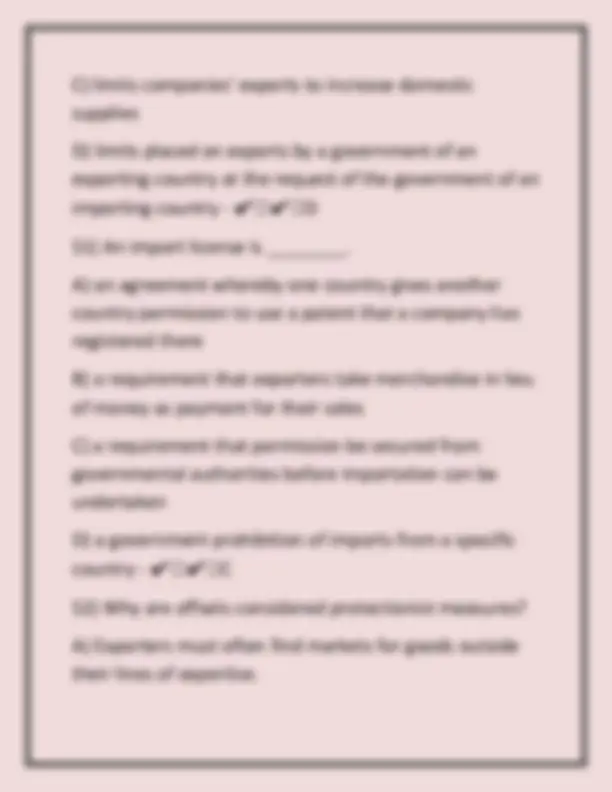
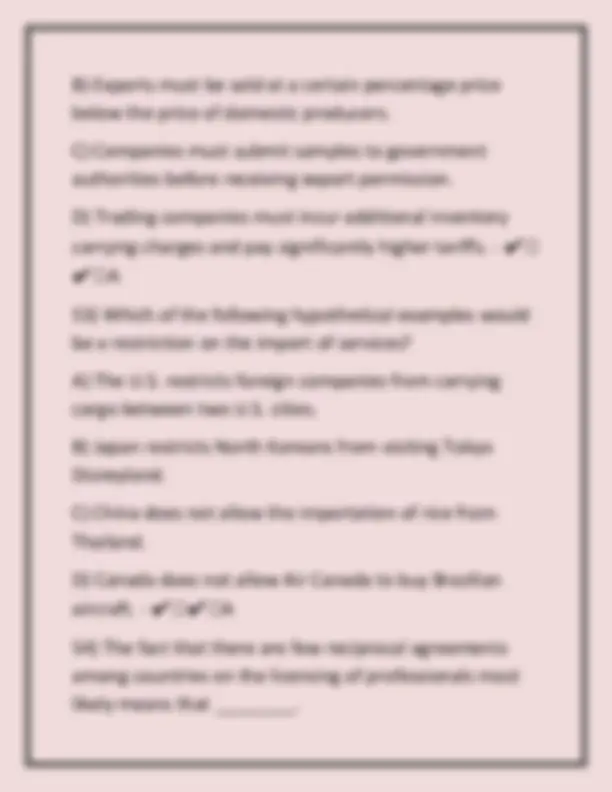
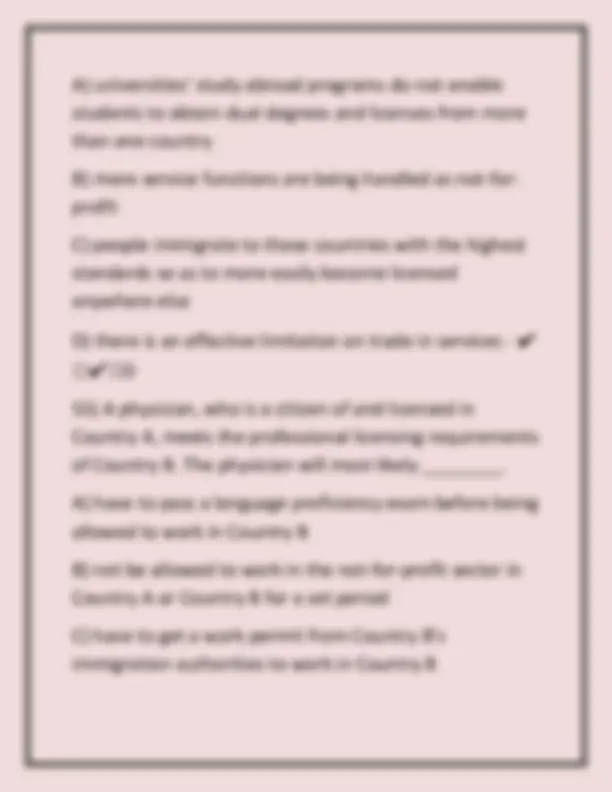
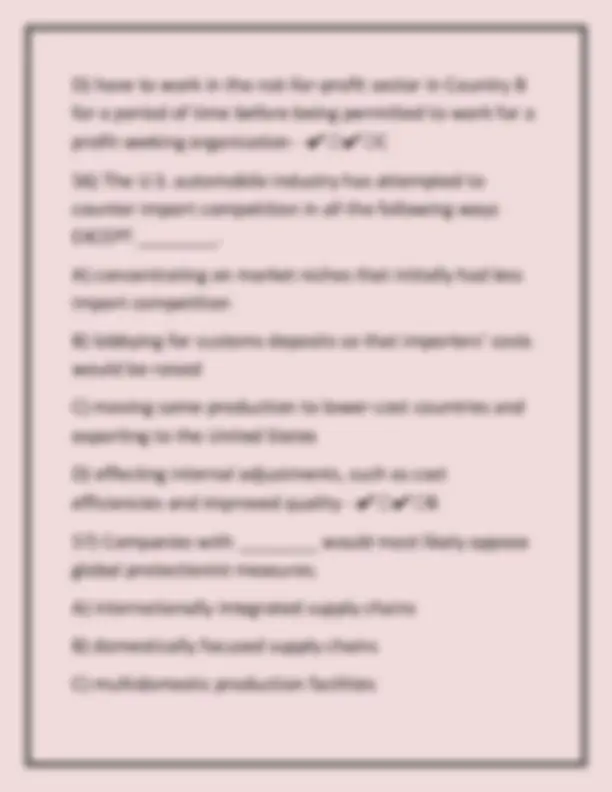
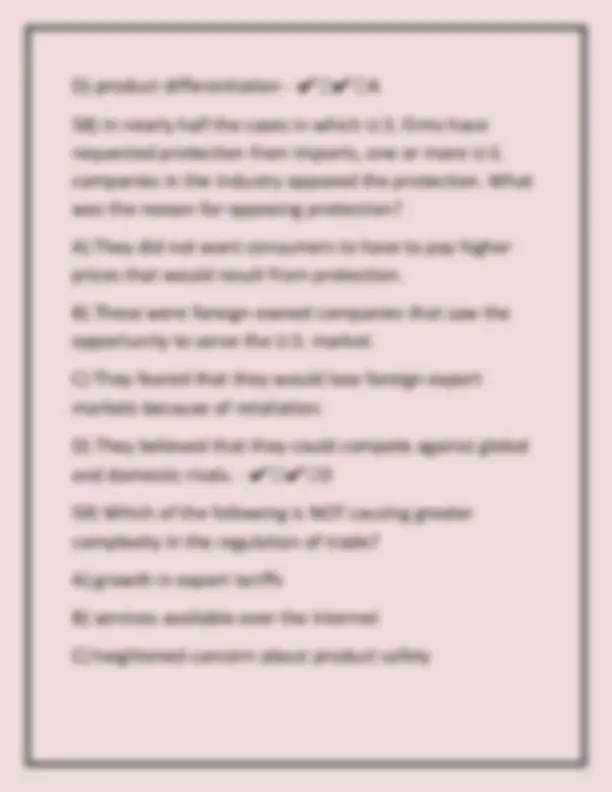
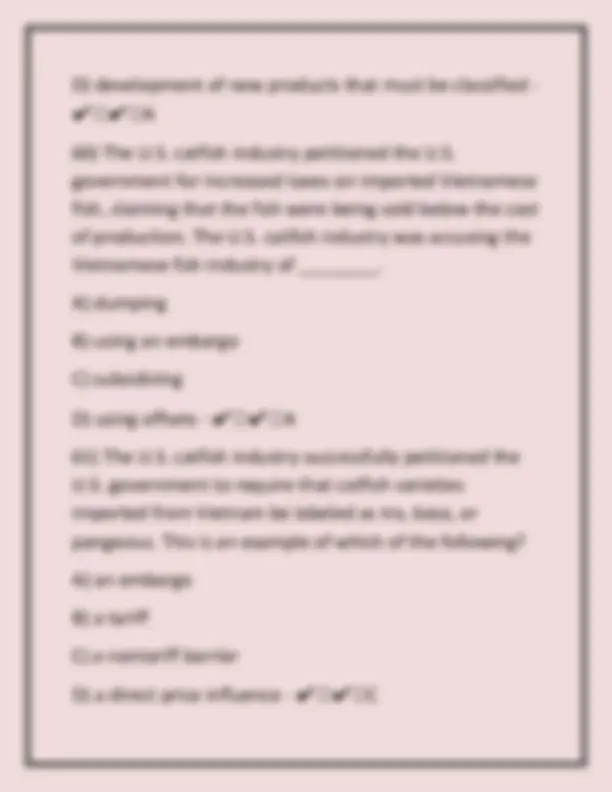
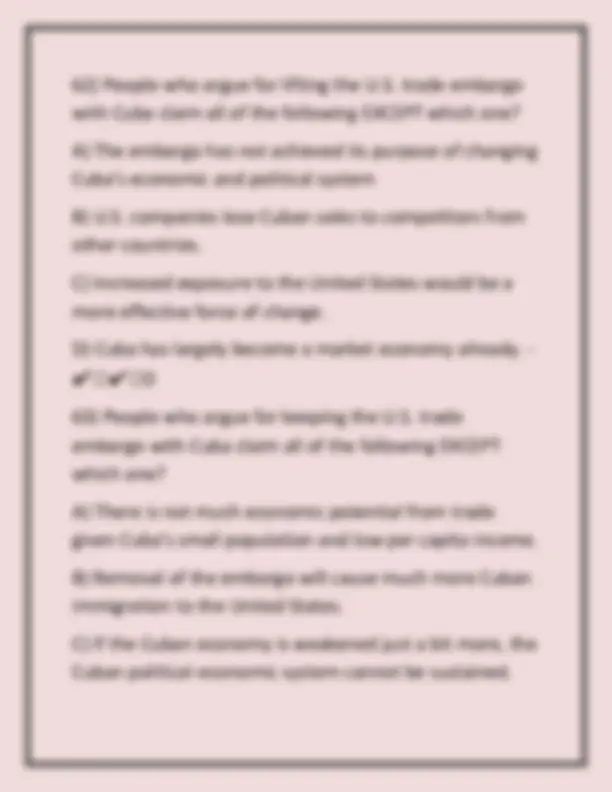
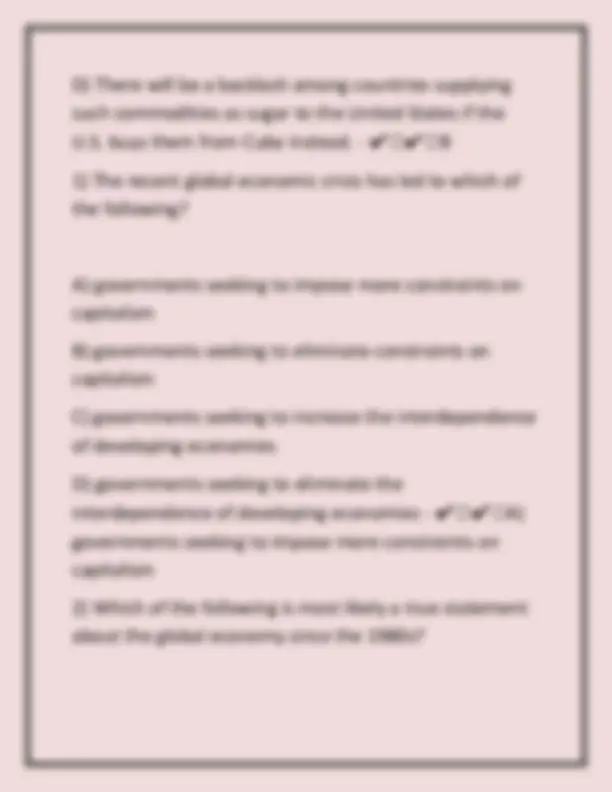
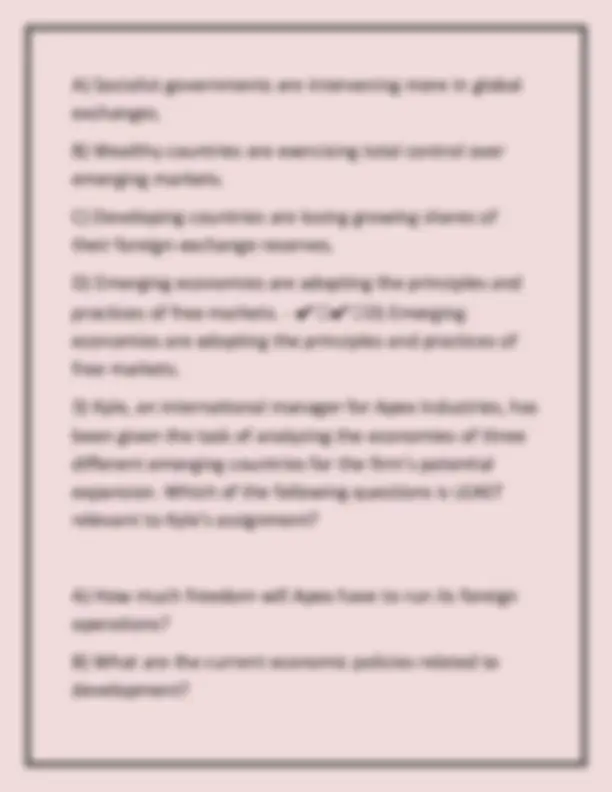
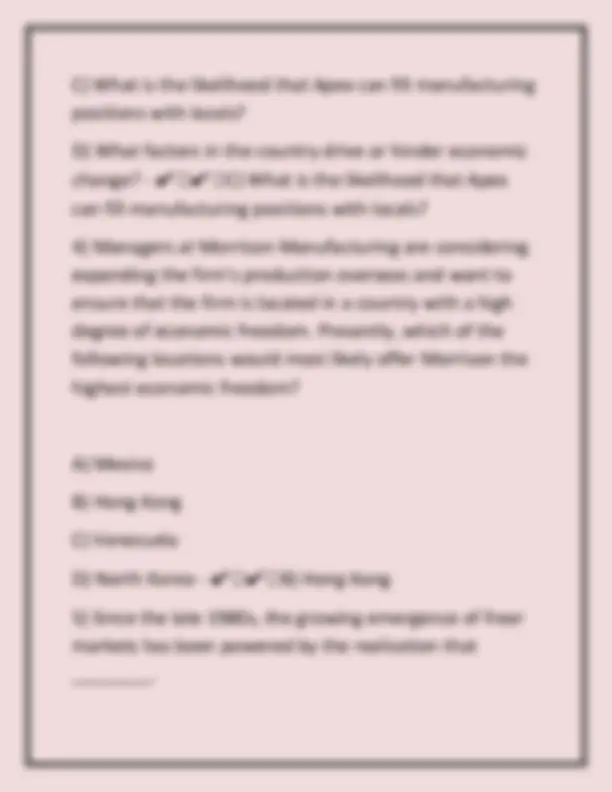
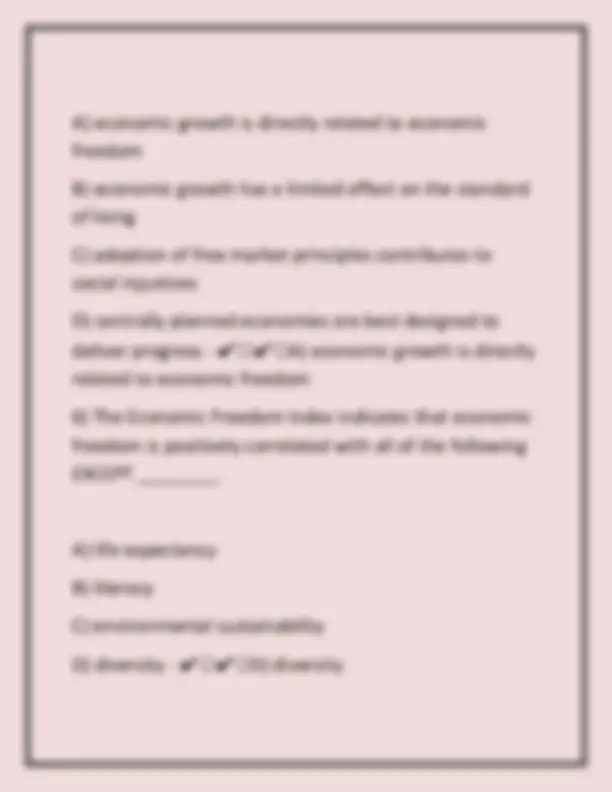
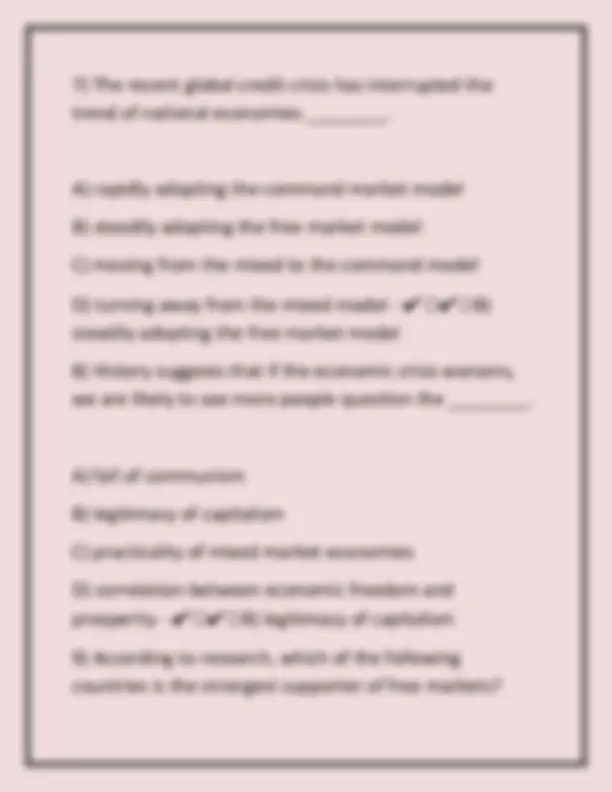
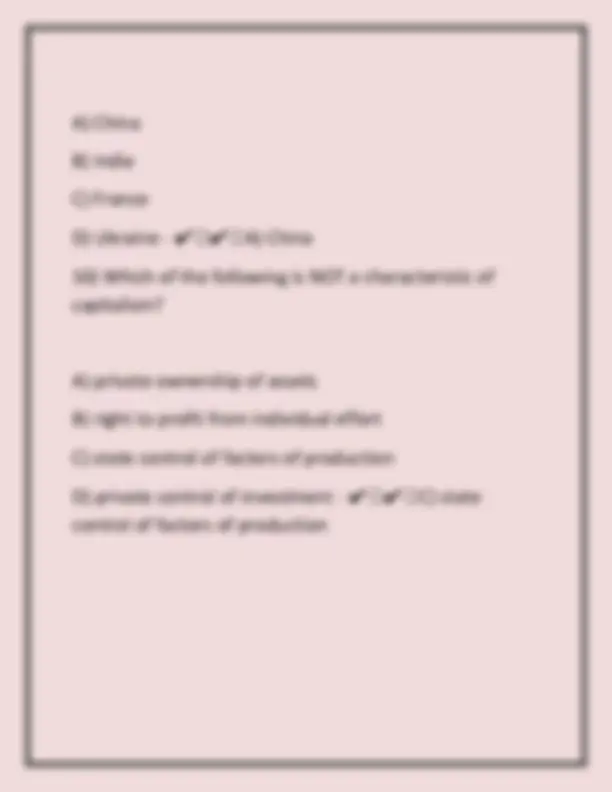


Study with the several resources on Docsity

Earn points by helping other students or get them with a premium plan


Prepare for your exams
Study with the several resources on Docsity

Earn points to download
Earn points by helping other students or get them with a premium plan
Community
Ask the community for help and clear up your study doubts
Discover the best universities in your country according to Docsity users
Free resources
Download our free guides on studying techniques, anxiety management strategies, and thesis advice from Docsity tutors
Davis D270|181 Final Revision End Of Year Exams With Correct And Complete Solutions|94 Pages
Typology: Exams
1 / 94

This page cannot be seen from the preview
Don't miss anything!























































































A) private business ownership
B) competitive pricing and marketing
C) market-generated supply and demand
D) government controlled economic activity - ✔ ✔ D) government controlled economic activity
A) government administrators who monitor the equilibrium of supply and demand
B) industry coalitions that strive to improve the efficiency of production and service
C) consumer group alliances that negotiate with firms to improve product quality
D) consumers who "vote" by their personal decision to buy or not buy products - ✔ ✔ D) consumers who "vote" by their personal decision to buy or not buy products
A) command economy
B) market economy
C) private economy
D) mixed economy - ✔ ✔ B) market economy
A) formal cooperation among government, companies, and workers to achieve stable growth
B) the government sets goals and determines the price and quantity of what is produced
C) different economic sectors coordinate the activities of the federal government
D) each enterprise sets its goals before making reports to
the central government - ✔ ✔ B) the government sets goals and determines the price and quantity of what is produced
A) market economy
B) mixed economy
C) command economy
D) democratic economy - ✔ ✔ C) command economy
A) Consumers have choices of many substitutes for any given product.
B) Quality of products and services tends to be consistent.
C) The prices of goods and services frequently change.
D) Many products are usually in short supply. - ✔ ✔ D) Many products are usually in short supply.
A) state-directed
B) market
C) command
D) mixed - ✔ ✔ D) mixed
A) United States
B) France
C) United Kingdom
D) Australia - ✔ ✔ B) France
A) standardized procedures implemented by the state
B) high economic growth rates for the long-term
C) privatization of many factors of production
D) violent political and legal upheaval - ✔ ✔ C) privatization of many factors of production
A) leveraging control of the financial system
B) developing national corporations
C) supporting the local activities of foreign competitors
D) systematically managing trade relations - ✔ ✔ C) supporting the local activities of foreign competitors
A) total of all consumption and investment that takes place in a national economy
B) income generated in one country, regardless of who owns the productive assets
D) be added to the GNI of the United States but not the GNI of Mexico - ✔ ✔ D) be added to the GNI of the United States but not the GNI of Mexico
A) net national product (NNP)
B) gross national product (GNP)
C) gross domestic product (GDP)
D) gross national income (GNI) - ✔ ✔ C) gross domestic product (GDP)
A) per capita GNI
B) GNI growth rate
C) purchasing power parity
D) degree of human development - ✔ ✔ B) GNI growth rate
A) purchasing power parity
B) economic growth rate
C) gross domestic income
D) gross national product - ✔ ✔ A) purchasing power parity
A) Human Development Index
B) Net National Product
C) Genuine Progress Indicator
D) Human Development Index - ✔ ✔ C) Genuine Progress Indicator
A) Deflation
B) Inflation
C) Expansion
D) Reflation - ✔ ✔ B) Inflation
A) difficulties of identifying a definitive set of predictive economic indicators
B) a lack of reliable economic data from most developed economies
C) the isolation of most markets from each other
D) static nature of the marketplace - ✔ ✔ A) difficulties of identifying a definitive set of predictive economic indicators
A) erode confidence in a country's currency
B) give central banking officials excessive flexibility to manage monetary policy
C) increase the real income of people, thereby inflating their spending and borrowing levels
D) lower consumer demand for foreign goods, which triggers lower prices and eventually lower employment - ✔ ✔ A) erode confidence in a country's currency
B) number of people who have stopped looking for work because full-time jobs are unavailable
C) percentage of unemployed workers seeking paid work relative to the total labor force
D) number of workers eligible for government services
and unemployment benefits - ✔ ✔ C) percentage of unemployed workers seeking paid work relative to the total labor force
A) foreign and national debt
B) inflation and unemployment rates
C) unemployment level and total debt
D) trade deficit and long-term inflation rate - ✔ ✔ B) inflation and unemployment rates
A) The tax system is so poorly run that the government cannot collect all the revenues it expects.
B) Government costs such as security and social programs exceed total tax revenues.
C) The government borrows money from international financial institutions.
D) State-owned enterprises run large deficits. - ✔ ✔ C) The government borrows money from international financial institutions.
A) The government of Country X borrowed money from local banks.
B) The government of Country X borrowed money from other governments.
C) The government of Country X spent more than it collected in revenues.
D) Income inequality between metropolitan and rural areas threatens a country's social stability. - ✔ ✔ B) GNI is the most effective tool for estimating the relative wealth of a nation's citizens.
A) gross national product
B) economic development
C) political and legal risk
D) income inequality - ✔ ✔ D) income inequality
A) Base of the Pyramid
B) Hierarchy of Needs
C) Happy Planet Index
D) Gini coefficient - ✔ ✔ A) Base of the Pyramid
A) trade deficit
B) Gini coefficient
C) balance of payments
D) purchasing power parity - ✔ ✔ C) balance of payments